Becca Hillburn's Blog, page 40
July 31, 2016
Drawing Resources
Looking for a little extra drawing help? Some encouragement, tutorials, or demonstrations? Below are all free resources to help you get started drawing, and if you check the recommended reading section of my sidebar, you'll find even more great stuff. Let the internet be your art school!
If you have any questions, or would like to see additional tutorials or follow ups, demonstrations of a particular technique, or an explanation that had been left hanging, please send me an email using the handy email form to your left! I'm always looking for new suggestions, and I'd love to hear from you.
Some of these are blog posts, some of these are videos, and some of these are outside resources that do such an excellent job at covering topics that there's no need for me to throw in my two cents. All of the resources listed are freely available on the internet for anyone to peruse.
Figure Drawing Resources
Tutorials
Figure Drawing Demo (blog post)
Figure Drawing Demonstration (video)
Demonstrating my Sketching Tools (video)
Intro to Comic Craft: Roughing it (video)
Chibi Kara Illustration Timelapse (video)
ArtSnacks Challenge February 2016 (video)
Drawing Process- Pencil Sketch (blog post)
Facial Anatomy and Construction(blog post, older)
Anatomy of a Clay Man (blog post, older)
ASE Panel- Anatomy Presentation: (presentation with slideshow)
Very Basic Human Anatomy/Figure Drawing (very old, blog post, may be hard to read)
Guest Post: Tips and Tricks for Drawing Women of Various Body Types (blog post, NSFW)
Anatomical Construction (blog post, NSFW)
Outside Resources
Senshi Stock Archive
Senshi Stock Website
Senshi Stock Drawing Tool
Senshi Stock Tumblr
Pixelovely (NSFW, drawing tool)
Perspective Resources
Tutorials:
What is Perspective? (outside resource)
Perspective in the Panels: Intro to Comic Craft (video)
Intro to Comic Craft: You Need Perspective (video)
Perspective Grids (blog post)
Bravest Warriors: The Search for Catbug Process (blog post, double page spread process)
Creating Dynamic Backgrounds for Comics: Part 1: Drawing Thumbnails (outside resource, video)
Creating Dynamic Backgrounds for Comics: Part 2: Two-Point Perspective Images (outside resource, video)
Creating Dynamic Backgrounds for Comics: Part 3: Rules of Illusion (outside resource, video)
Creating Dynamic Backgrounds for Comics: Part 4: Implied Realism (outside resource, video)
COMPOSITIONS: How to Arrange Items within a Panel (outside resource, video)
Mixed Resources
The Famous Artist Course (on Scribe, PDF)
If you enjoyed this post, and enjoyed the art resources I shared here (most of which are my own), please take a moment to share this post to your favorite social network using the handy links below! Sharing my work to your friends helps me out a bunch- it allows me to broaden my audience, introduces my work to new people, and boosts my stats, which is one of the metrics that sponsors look at when they consider sponsorship. If you'd like to help even more, please consider helping to fund future content like this by checking out my Patreon!
Please consider donating to this blog or purchasing from Natto-shop (http://nattosoup.com/shop) if you want me to continue publishing quality content. All materials tested were purchased from my own pocket. Keep on Truckin' Nattosoup is not under any sponsorship.
If you have any questions, or would like to see additional tutorials or follow ups, demonstrations of a particular technique, or an explanation that had been left hanging, please send me an email using the handy email form to your left! I'm always looking for new suggestions, and I'd love to hear from you.
Some of these are blog posts, some of these are videos, and some of these are outside resources that do such an excellent job at covering topics that there's no need for me to throw in my two cents. All of the resources listed are freely available on the internet for anyone to peruse.
Figure Drawing Resources
Tutorials
Figure Drawing Demo (blog post)
Figure Drawing Demonstration (video)
Demonstrating my Sketching Tools (video)
Intro to Comic Craft: Roughing it (video)
Chibi Kara Illustration Timelapse (video)
ArtSnacks Challenge February 2016 (video)
Drawing Process- Pencil Sketch (blog post)
Facial Anatomy and Construction(blog post, older)
Anatomy of a Clay Man (blog post, older)
ASE Panel- Anatomy Presentation: (presentation with slideshow)
Very Basic Human Anatomy/Figure Drawing (very old, blog post, may be hard to read)
Guest Post: Tips and Tricks for Drawing Women of Various Body Types (blog post, NSFW)
Anatomical Construction (blog post, NSFW)
Outside Resources
Senshi Stock Archive
Senshi Stock Website
Senshi Stock Drawing Tool
Senshi Stock Tumblr
Pixelovely (NSFW, drawing tool)
Perspective Resources
Tutorials:
What is Perspective? (outside resource)
Perspective in the Panels: Intro to Comic Craft (video)
Intro to Comic Craft: You Need Perspective (video)
Perspective Grids (blog post)
Bravest Warriors: The Search for Catbug Process (blog post, double page spread process)
Creating Dynamic Backgrounds for Comics: Part 1: Drawing Thumbnails (outside resource, video)
Creating Dynamic Backgrounds for Comics: Part 2: Two-Point Perspective Images (outside resource, video)
Creating Dynamic Backgrounds for Comics: Part 3: Rules of Illusion (outside resource, video)
Creating Dynamic Backgrounds for Comics: Part 4: Implied Realism (outside resource, video)
COMPOSITIONS: How to Arrange Items within a Panel (outside resource, video)
Mixed Resources
The Famous Artist Course (on Scribe, PDF)
If you enjoyed this post, and enjoyed the art resources I shared here (most of which are my own), please take a moment to share this post to your favorite social network using the handy links below! Sharing my work to your friends helps me out a bunch- it allows me to broaden my audience, introduces my work to new people, and boosts my stats, which is one of the metrics that sponsors look at when they consider sponsorship. If you'd like to help even more, please consider helping to fund future content like this by checking out my Patreon!
Please consider donating to this blog or purchasing from Natto-shop (http://nattosoup.com/shop) if you want me to continue publishing quality content. All materials tested were purchased from my own pocket. Keep on Truckin' Nattosoup is not under any sponsorship.

Published on July 31, 2016 13:00
July 26, 2016
Mechacon 2016 Announcement

Hey guys! It's that time again- I'm off to my native city of New Orleans for Mechacon! The above table should help you find me if you decide to visit the Artist Alley this weekend. I'll have all sorts of goodies this year for you to check out, including:
Mini Watercolors
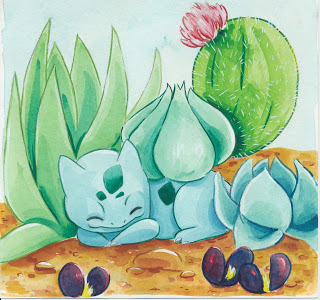
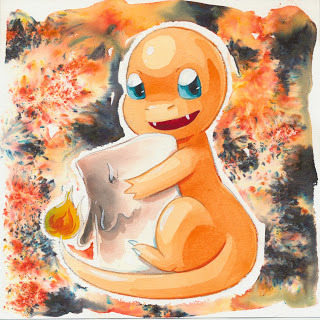
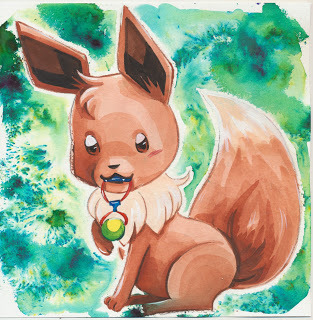
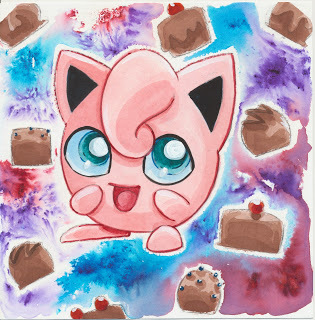
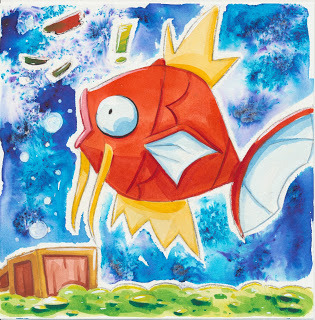
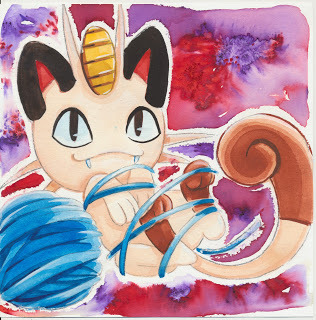
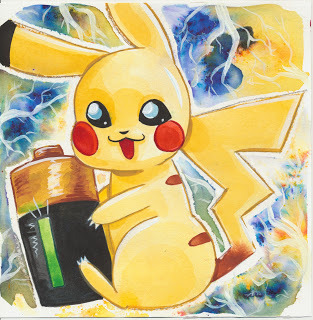
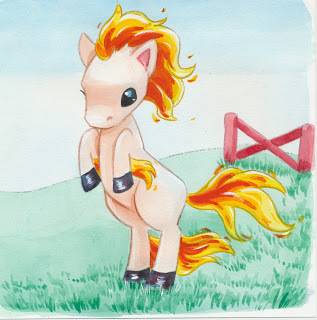
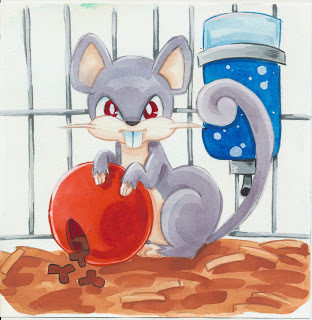
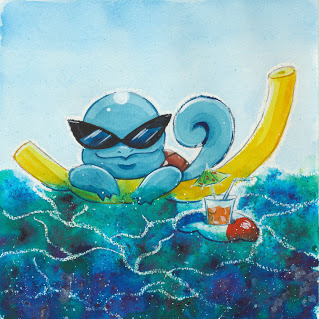
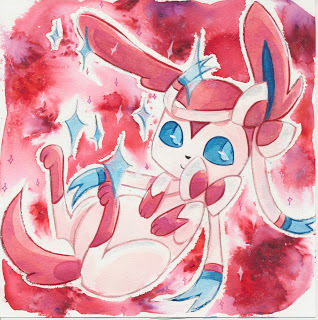
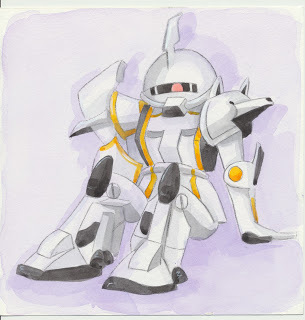
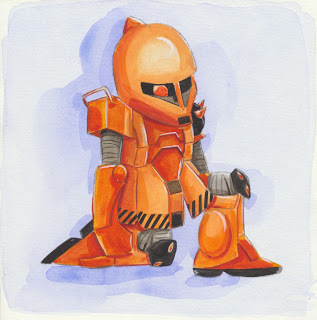
Handlettered Wooden Room Signs
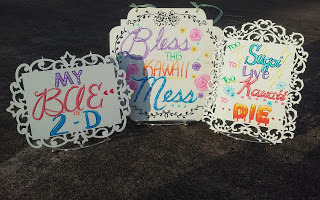
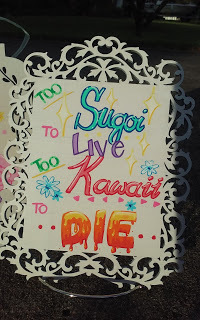
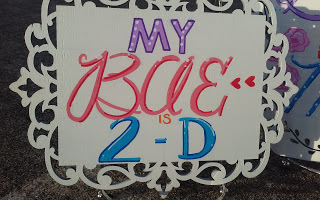
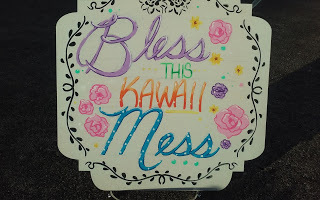
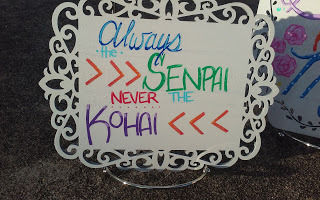
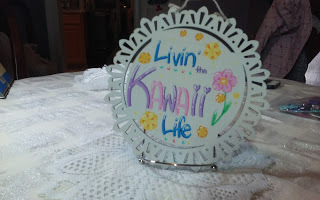
New Mini Print DesignsCome by in person to check them out!
New Mini Comics
Let Sleeping Cats Lie...
Or Else They'll Drink Your Watercolor Water
Returning Favorites Magical Girl March
Favorite Fictional Femmes
7" Kara Volume 1
+ select pages from the all new, still in progress Chapter 6
Large format original watercolor piecesYou'll have to come by to check them out in person!
CommissionsFrom $5 dots for eyes to large format, detailed watercolor illustrations, there's something for every taste and budget.
Sassy Buttons
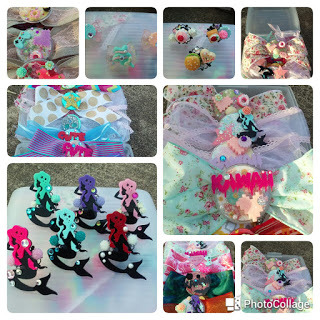
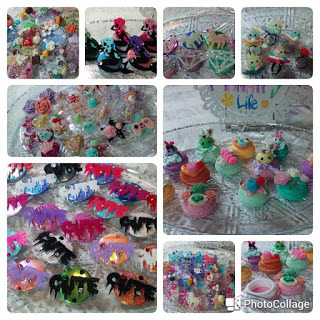
Hair and Pinback Ribbons
Barrettes
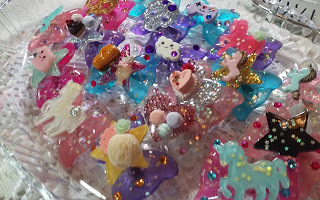
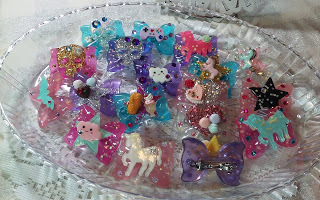
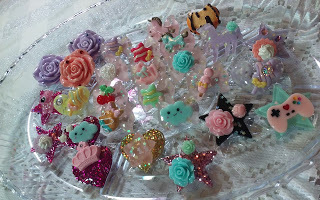
Pins
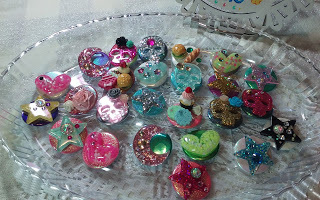
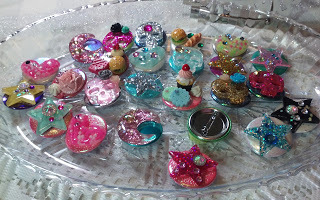
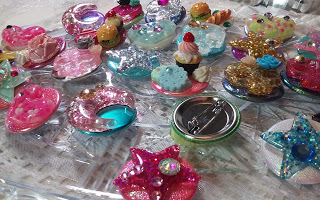
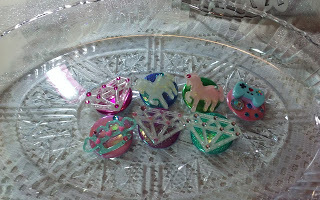
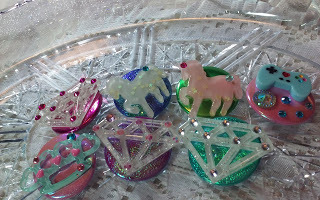
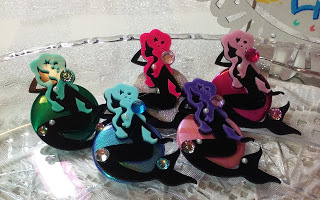
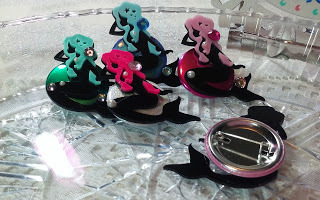
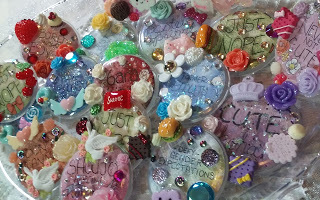
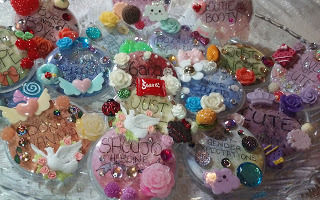
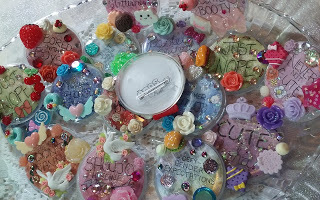
Rings
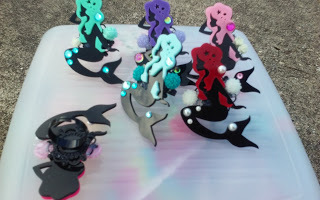
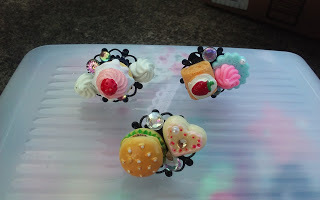
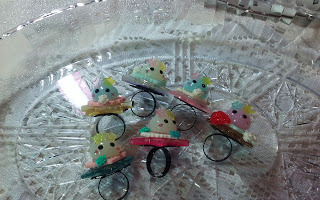
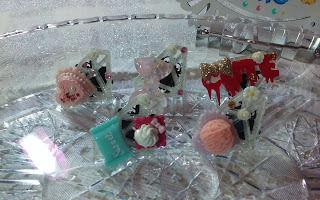
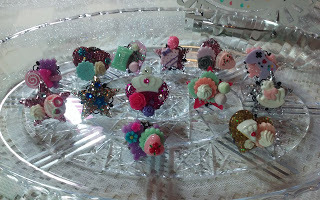
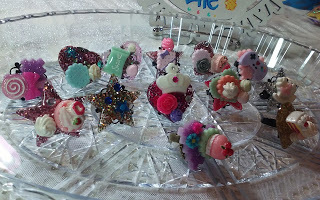
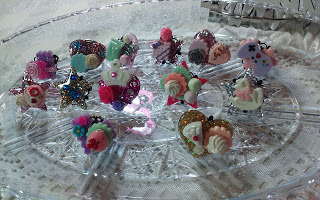
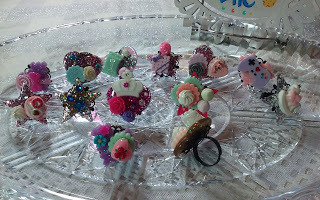
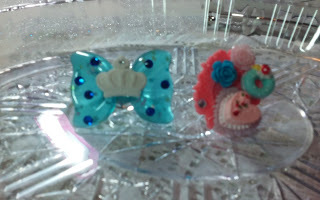
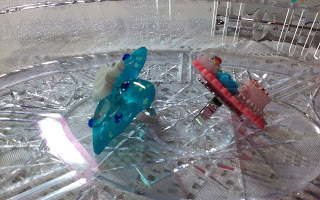
Other cute goodies
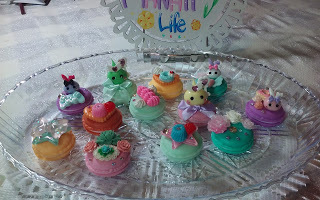
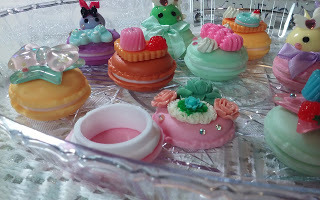
I hope to see you guys this weekend!
Please consider donating to this blog or purchasing from Natto-shop (http://nattosoup.com/shop) if you want me to continue publishing quality content. All materials tested were purchased from my own pocket. Keep on Truckin' Nattosoup is not under any sponsorship.

Published on July 26, 2016 20:32
Watercolor Basics: Watercolor Terms You Should Know
This glossary post was really annoying to write- a reminder of all those 'collect definitions' assignments from my grade-school days. It also took several days to write- lots of research, lots of experience, I did not just assemble the definitions written by others (unlike in grade-school). If this post was helpful to you at all, please consider sharing it to your social networks- Twitter, Facebook, Tumblr, Pinterest, so that others may also benefit. This helps me increase my audience, establish a reputation, and introduces others to my work, so this would really help me out a lot. This is one post in an ongoing series of watercolor posts here and on my
YouTube channel
, so if you're interested in watercolor, please keep an eye on this blog for future updates. If you REALLY enjoyed this post, and would like to help fund future posts on this topic, please check out
my Patreon
for joining the Nattosoup community. Your contributions go towards purchasing better equipment, paying for the time spent writing these long, in depth posts, and purchasing more art supplies for review.
Basic Glossary of Watercolor Terms Used in this Series
As we come across terms and techniques not covered in this post, I not only hope to define them, but to add them to this post, so this post is a work in progress. If you can't find what you're looking for here, I have many outside resources linked at the bottom of the post, but I also highly recommend:
DickBlick's Watercolor Category (not just full of products, but full of definitions, and if you scroll to the bottom, they cover individual topics in detail)
Watercolor Painting.com's Glossary
This glossary is intended to help artists who are interested in making watercolor illustrations and watercolor comics, so it is by no means comprehensive for the fine art watercolorist. This is also not intended to be an illustrated glossary- I intend to provide photos and videos for demonstration in later posts, but I have used photos where necessary to illustrate the difference between specific things.
I highly recommend you bookmark this resource for later reference- I don't expect you to read everything in one sitting. Control F should help you locate terms quickly on a Windows machine.
If there are any terms you'd like to see defined in this post, please leave a comment below, and I'll work on amending this post as suggestions come in.
Paper Types:
There are three surface finishes commonly used for watercolor art and illustration. These are:
Hot Press- Has a very smooth paper surface for watercolor paper, I find it's very similar to Smooth Bristol paper, and takes ink well. I find that brushstrokes are difficult to blend out, and stand out much more on hot press than on other types of watercolor papers. This paper is processed with high pressure as it dried. Hot press paper is made by pressing cold press paper between plates under pressure.
Cold Press- Amount of tooth varies by paper content and brand, some brands have a very moderate amount of texture some are very heavily textured.The most common type of paper used by watercolor artists. Quality cold press watercolor paper is double sided, with one side having a smoother finish.
Rough Press- Rough press watercolor paper has even more tooth than cold press, and you may also find it also works well for color pencil or pastel illustration.
Other:
Mixed Media Paper: Mixed media paper is designed to take both wet and dry media, and is a favorite amongst many marker artists, who want a paper that can take light washes of watercolor in addition to handle their alcohol ink without bleeding through. Quality often depends on the grade. Mixed media paper can take wet medias such as watercolors, gouache, and even acrylics. Mixed media also comes in a variety of weights, I recommend at least 140lb, to prevent buckling.
Illustration Board: Illustration board has only one finished side, unlike Bristol's two. Can take wet media, and should not bow. Does not need to be stretched as the board has sufficient internal structure. Tooth is similar to Smooth Bristol or Hot Press watercolor paper. Some illustration boards can be sanded down for a fresh surface.
Canson Art Board: Available in several paper types, including Arches Watercolor Paper, Bristol, Manga Art Board, Drawing Art Board, ect.
Watercolor Panels and Boards:
Examples:
Ampersand Aquaboards
Fredrix Watercolor Canvas Boards
Arches Art Boards
Crescent Watercolor Boards
Weight
Common weights
70- 90lb (student grade): Very light weight for watercolor paper, about the same thickness as cardstock. Will buckle when washes are added.
140lb: Most common weight available. Approximately the same thickness as Bristol board. Still requires stretching for heavier washes or repeated layers, but tends to hold up to the demands I place on my watercolor papers. The weight I use for 7" Kara pages- will go through my printer, affordable, fairly easy to find.
300lb (between Bristol Board and Illustration Board in thickness). Does not need to be stretched.
Paper Content:
100% Cotton: Made entirely of cotton, no linen or woodpulp. Typically highest quality papers.
Woodpulp( (wood sulfite paper)/Cellulose based: Any rag content less than 100% include manilla, flax, or synthetic fibers, or may included wood pulp, and are typically marketed as student grade.
Rag: Generally used to refer to any natural fiber, but most commonly cotton fiber.
Hemp: An alternative to woodpulp.
Synthetic: Non-organic, plastic or stone based. Handles very differently.
Examples: Yupo, Terra Skin
Machine Made: Paper texture is embossed onto surface.
Mould made: Mould made paper offer consistent quality and texture. Paper texture is embossed onto surface.
Handmade: Paper texture is a natural result of shrinkage.
Natural White- Does not contain chemicals to bleach the paper. Tends to be a warmer, more natural white. Acid free and pH neutral.
Bright White- Has been chemically bleached to achieve a cool white hue. Still acid free and pH neutral.
Sizing: Sizing is used to give watercolor papers internal and external structure. A common sizing agent is gelatin. Sizing determines the amount of color the paper will absorb- more sizing allows for more color to remain on the surface, and allows for easier reworking.
Stretching removes excess sizing, but does not remove all. When stretching paper, always work with cold water, as warm water may remove all sizing. Papers that have too much sizing may resist accepting paint. Internally sized paper has the sizing added during the manufacturing process, whereas tub sized papers are soaked in a bath after the paper has been made.
Purchasing Options for Paper:
Roll: This is how you buy watercolor paper by yard. This is great if you work really large, or if you really want to save money and cut your own paper. Storage may become an issue, given the size.
Sheet: An individual sheet of watercolor paper, usually large (24"x30"). Many artists will then use a straight edge to tear these sheets down to more manageable sizes. Many watercolor papers only come in sheets or on a roll.
Tape Bound: Individual sheets are bound together at the top of the pad. Sheets are removed from the pad for painting, usually need to be stretched first. I use Canson's Montval for my 7" Kara pages, as I can run them through my printer for bluelines.
Gum Bound: Bound on at least two sides, often on all four sides. Gum bound pads hold the paper tight while you paint, a palette knife is used to remove the paper from the pad once the painting is finished, no need to stretch the paper beforehand. Really handy for field painters. I use Fluid's Fluid 100 and regular gum bound pads for many of my watercolor commissions.
Student Grade: Student grade papers usually include a woodpulp base. These can be useful for practicing techniques, but you may find that they're difficult and temperamental to use.
Artist Grade: Artists grade papers are usually 100% Cotton Rag, hand or mould made, acid free and Ph neutral. Artist grade papers are more expensive than student grade, but are capable of more- less prone to buckling, absorbs paper better, pigments settle better on the surface.
Popular Brands:
Strathmore
Canson
Arches
Winsor and Newton
Fluid
Brush Types:
Mop: Used to apply water for stretching watercolor paper, large washes of color
Round: Used for everything from filling in large areas of color (size 10) to teeny tiny details like eyelashes (size 00)
Flat: Very similar to what people normally think of when they think of a paintbrush. This can be used to apply washes (especially graduated washes)
Filbert: Like a flat brush, but with a rounded top. Can cover a larger area, but still capable of fine details.
Rigger/Liner: Originally designed as a lettering brush, a rigger can carry a lot of color, and is great for drawing long lines cleanly in one go.
Hake: Also used to apply initial washes to a piece. A flat, rakelike brush that usually uses stiffer animal hairs, like goat. This brush can also be used to pick up excess water from the page.
Sumi: Originally used for Japanese sumi painting, sumi brushes have become a popular economical option for many watercolor artists. Hair can be goat or pony. Nicer quality sumi brushes have a bamboo handle, inexpenive brushes use plastic. Does not have a metal ferrule.
Scrubber Brush: A (usually synthetic) brush with short, stiff bristles, used for removing pigment from the paper.
Waterbrush: A fairly new innovation in brushes, a waterbrush carries the water you'll use within the body of the brush.
For more brush types and information, please check out this overview produced by DickBlick.
Brush Fiber Types:
Synthetic- Manmade fibers of either nylon or polyester. Can be formed into a variety of shapes, and are often altered to mimic the color carrying capacity of natural fibers. A common name for synthetic fibers is Taklon (Golden Taklon, white Taklon- Princeton makes a lot of these). Synthetics are cheaper and less prone to damage, but even excellent synthetics don't have all the positive qualities of a good kolinsky sable brush. I recommend synthetics as an affordable way to acquire larger brush sizes- mops, flats, and rounds.
Squirrel- Two types
Gray-Gray squirrel is native to Russia and usually in short supply. The most highly sought for lettering brushes and quills.
Brown-Brown is more readily available, and is used for student quality and medium quality watercolor brushes. It points quite well, but has little of the snap Kolinsky is prized for.
Camel: Not from camels, but a lend of squirrel, ox, goat, pony, or a blend of severalhairs. Student grade.
Kolinsky/Sable: Not sable, but mink from northernmost China and Siberia. Considered the best material for watercolor due to its snap, spring, and strength. Can hold a very fine point, and is considered professional grade. Irresistible to marauding housecats and moths, so keep out of reach of pests.
Sabline- Ox hair dyed and treated to mimic sable. Often used in sable mix blend brushes to lower costs.
Pony- Used in scholastic grade brushes.
For more information on the types of fibers used in watercolor brushes, check out this handy chart from DickBlick.
Brush Parts:
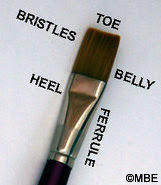 Image Source
Image Source
Toe/Point: Very tip of the bristles
Bristles
Belly: Middle of brush. A good round has a large belly when wet, capable of holding a lot of water/paint
Heel: The crimped part of the ferrule which holds the bristles in place
Ferrule: The metal crimp that attaches the bristles to the brush handle
Handle: Can be made of wood, acrylic, or plastic. Some travel brushes have a metal handle.
Paint Types:
Tube:
Although it's not really recommended by fine artists, I often refill my watercolor pans with color from tubes. A tube of quality watercolor usually costs as much as a pan, and I can refill the pan several times from the tube. Refilling pans this way has a few issues- colors straight from the tube are going to be more vibrant than reactivated tube colors, pan watercolors are designed to be reactivated with water, whereas tube colors are not, tube watercolors are designed to excell at covering large washes, and may not be suited for detailed work. I recommend you practice discretion when handling tube watercolors in the manner described- YOUR MILEAGE MAY VARY.
Pan: Pan watercolors are semi moist- designed to quickly activate and quickly clean up with little paint waste. Many artists may find pans an easier way to start watercoloring- I started with pans. To activate pans, I recommend spritzing with water about five minutes before painting, otherwise it may take awhile for the pigments to loosen up. Pans can be hard on your brushes, so make sure you condition your brushes occasionally.
There are professional grade pan paints and professional grade tube paints, which you paint with are not indicative of your skill or professionalism as an artist, so use what you are comfortable with.
Comes in a few sizes, most commonly-
Half Pan
Whole Pan
Giant or Extra Large Pan- usually for large pieces and large washes
Cakes: Usually reserved for cheaper watercolors, watercolor cakes may utilize chalk to increase opacity, and may rely on dyes. Artist Loft's watercolor set, the Angora watercolors, and most brightly colored, inexpensive watercolors are in cake form. These cannot really be refilled the way pans can.
Liquid watercolors: Pigment (or dye) in distilled water. Liquid watercolors come with a variety of issues including limited lightfastnes and cracking, so experiment widely before using these on a longform project. Not all liquid watercolor are dye based. Robert Doak and Associates released a line with pigment as a colorant, as well as Schmincke. Usually concentrated, often dye based. Capable of brilliant colors, but generally not lightfast.
Pigments:
Naturally made from stones, insects, flowers, ect
Often less brilliant, intense than dyes
Often tend towards earth colors (there are exceptions, of course)
Dyes:
Synthetically (chemically) made, sometimes from petroleum products
Bright, intense colors- neons, hot reds, ect
Often used in 'watercolor markers'
Often light fugitive, often not entirely water proof
Often used in non toxic, childrens, or student grade materials
Other types of watercolor:
Paper (Peerless)
Crayon
Watercolor Pencil
Ink Pencil (Derwent Inktense)
Marker
Lightfastness:
Fugitive- Not lightfast, will fade over time. You can expect a fugitive color to shift within 20 years. Many synthetics, while brilliant, are fugitive.
Fair Lightfastness- Color should not change for at least 20 years, upwards to 100.
Very good
Excellent
Semi Permanent
Permanent
For more information on finding the lightfast rating on a tube of paint, please read this excellent post on About.com. To test your paints for lightfastness at home, read this post.
Transparent- Colors allow light to shine through the paint, allowing the paper to reflect light back. Colors appear to glow. You can easily see the paper, linework, or other colors through the applied color.
Semi Transparent- Somewhere between the two
Opaque- Blocks light from hitting the paper beneath. Colors may seem less vibrant. Obscures paper, linework, or previous colors. Glazing with opaque colors often results in MUD.
To test your own paints for opacity, please check out this PDF.
Staining Colors: Absorb quickly into the first few layers of the paper, and are difficult to lift back to the paper's original color. Mix well with other staining colors, but tend to dominate non staining colors.
Non Staining Colors: These color settle on the surface, rather than soaking in, and can be lifted once dried. These colors mix well with other non staining colors.
Granulating (also known as Sedimentary)- Can be transparent, semi-transparent, or opaque. Have larger pieces of pigment that fall out of solution early and settle into the crevices of the paper.
How Tube Watercolors are Made:
Popular Brands (Popular does not indicate quality, just common brands):
Winsor and Newton
Daniel Smith
Lucas
Peerless Watercolor
Kuretake Gansai Tambi
Sakura Koi
tubescakesArtist Loft
Cotman
Grades of Art Supplies
Children's Grade (also sometimes referred to as Scholastic): For young children. Non-toxicity and wash ability are paramount
Examples: Crayola, CraZArt, Alex
Hobbyist: For people interested in art supplies, but do not wish to make an investment, and do not have stringent requirements. Many craft brands fall into this category
Exampls: Artist's Loft
Student Grade: For people interested in art supplies and techniques, but do not yet have a lot of money to spend on supplies, and may not have the skills necessary to merit the expense.
Examples: Sakura Cras Pas, Cotman, Crayola Portfolio
Professional Grade: For artists who are interested in lightfastnes, permanence, and high pigmentation. Can justify making the investment, either through professional or personal benefit.
Examples: Daniel Smith, Arches, Winsor and Newton
Store Brand: Brands of supplies manufactured for a particular chain, and only sold through that chain. Some products are comparable to nationwide brands, and there are often partnerships (Winsor and Newton with Blick for example). These supplies to tend to cost less, and are often very good, but testing is required before investment, as not all store brands are equal.
Examples: Blick Studio, SoHo, Cheap Joe's Kilimanjaro
National Brand: Large brands that focus on making art supplies, either for particularly mediums or a handful of media. Often recognized by people outside the art community, easy to find reviews for these products.
Examples: Winsor and Newton, Caran d'Ache
Palettes:
Palettes to Hold Paint for Longterm
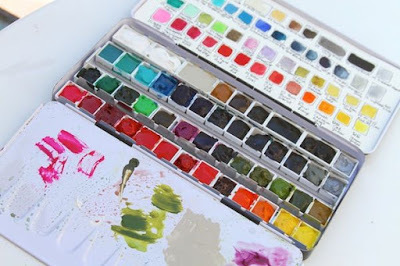 Image Sources
Image Sources
Metal Watercolor Box- Holds half pans or pans, includes mixing wells, refillable
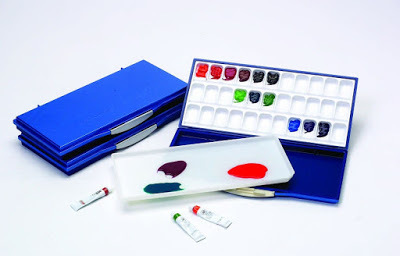 Image Source
Image Source
Airtight Mijello Palette- Useful for holding dried tube watercolors
Palettes to Hold Paint while Painting
Common Materials
Plastic
Enamel Coated Metal
Porcelain
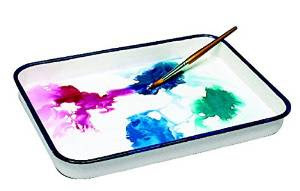 Image Source
Image Source
Butcher's Tray: Great for mixing up lots of color, especially if you don't mind your colors mixing together a bit. Good for landscape and floral painting
Welled Palettes:
There are many different types of welled palettes available at a variety of prices. You don't need to spend a lot of money to purchase palettes- you can often recycle household plastic goods into something that serves the purpose.
Traditional, fine art watercolorists often turn their noses up at individual palettes, but illustrators (and comic artists!) find them quite useful for painting pages in batches. These wells help insure color consistency throughout pages.
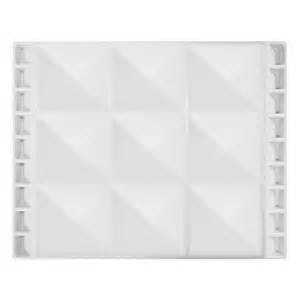 Image Source
Image Source
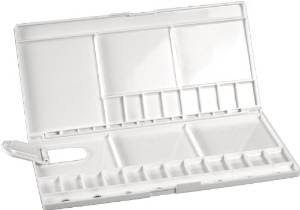 Image Source
Image Source
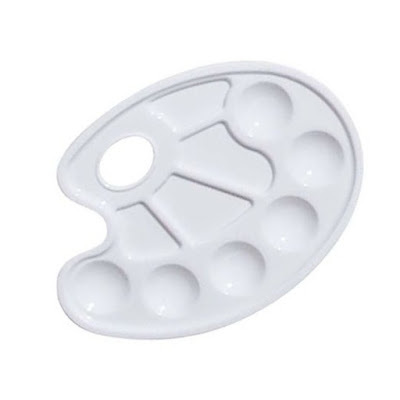 Image Source
Image Source
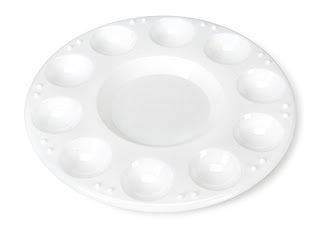 Image Source
Image Source
Technique Terms:
Swatching- Important when you've assembled or purchased a new palette of colors or paints. Swatching means activating a little bit of the color and applying it to the paper, to see how the color looks both wet and dry.
Stretching- Many watercolor papers (140lb and lower) require stretching to prevent the paper from buckling. Stretching involves attaching the watercolor to a support, to provide external stability while the internal structure of the paper is compromised. Stretching isn't intended to be permanent, once the page is finished, it's removed from the board.
Buckling: If your paper isn't a sufficient weight, or you didn't stretch it, buckling can occur. Buckling refers to the paper absorbing water inconsistently, which results in some parts buckling up. Buckling isn't the end of the world, but it's definitely something you want to control.
Wash: Wet, large scale application of color to paper.
Glaze: Wet application of fairly diluted paint onto paper, to tone the previous colors
Scrub: Removing layers of watercolor from the paper using a stiff bristled brush and water.
Drybrush: Application of paint with a fairly dry brush onto dry paper with the intention of leaving a speckled effect. Works best on Rough press, as it has enough texture.
Wet into Wet- Application of wet paint onto wet paper/already applied paint
Dry into Wet- Application of fairly dry paint onto wet paper/already applied paint
Wet into Dry- Application of wet paint onto dry paper/previously applied dried paint
Dry into Dry- Application of fairly dry paint onto dry paper/previously applied dried paint
Wax Resist- Application of wax to dry watercolor paper. The water can't permeate beneath the wax or wax crayon, as the wax repels (or resists) the water.
Masking: Masking reserves an area of the paper from future layers of paint. Masking can be done before any paint is applied to the page, or to save certain colors from darker future layers- for pops of color. Can be achieved in a number of ways:
Frisket Film: Typically used for stencils for airbrushing, grafitti. A plastic film with light adhesive on one side.
Masking Fluid: A liquid form of latex rubber. Applied when paper is dry, removed when painting is finished and paper is dry. Many artists have difficulty using this (myself included).
Masking tape: White, crepe paper tape with low tack.
Places to Buy
Amazon
Jerry's Artarama
Cheap Joe's
Dick Blick
PlaZa
Paper and Ink Arts
References Used for this Post:
Watercolor Paper: Surfaces
ASW: Watercolor Paper
Watercolor Painting.com
Dick Blick Strathmore 500 Series Illustration Board Reviews
Green Field Paper: Hemp Heritage Watercolor Paper
Twinrocker Watercolor Paper
Cheap Joe's Glossary of Terms
Handprint
Watercolor Painting Tips- Brush Types
DickBlick' Guide to Brush Shapes
DickBlick's Guide to Brush Materials
Parts of a Brush
Pan Vs Tube Watercolors- Janene Walkky
Handprint- Tube, Pan, and Liquid Watercolors
Definition of Lightfastness- About.com
Art Glossary: Fugitive Color
How to Read the Label on a Tube of Paint- About.com
Watercolor Painting and Projects.com- Properties of Watercolor Painting
Learning Watercolor with Susie Short
Watercolor Palette Building
DickBlick: Categories: Watercolor
Watercolorpainting.com Glossary
Please consider donating to this blog or purchasing from Natto-shop (http://nattosoup.com/shop) if you want me to continue publishing quality content. All materials tested were purchased from my own pocket. Keep on Truckin' Nattosoup is not under any sponsorship.
Basic Glossary of Watercolor Terms Used in this Series
As we come across terms and techniques not covered in this post, I not only hope to define them, but to add them to this post, so this post is a work in progress. If you can't find what you're looking for here, I have many outside resources linked at the bottom of the post, but I also highly recommend:
DickBlick's Watercolor Category (not just full of products, but full of definitions, and if you scroll to the bottom, they cover individual topics in detail)
Watercolor Painting.com's Glossary
This glossary is intended to help artists who are interested in making watercolor illustrations and watercolor comics, so it is by no means comprehensive for the fine art watercolorist. This is also not intended to be an illustrated glossary- I intend to provide photos and videos for demonstration in later posts, but I have used photos where necessary to illustrate the difference between specific things.
I highly recommend you bookmark this resource for later reference- I don't expect you to read everything in one sitting. Control F should help you locate terms quickly on a Windows machine.
If there are any terms you'd like to see defined in this post, please leave a comment below, and I'll work on amending this post as suggestions come in.
Paper Types:
There are three surface finishes commonly used for watercolor art and illustration. These are:
Hot Press- Has a very smooth paper surface for watercolor paper, I find it's very similar to Smooth Bristol paper, and takes ink well. I find that brushstrokes are difficult to blend out, and stand out much more on hot press than on other types of watercolor papers. This paper is processed with high pressure as it dried. Hot press paper is made by pressing cold press paper between plates under pressure.
Cold Press- Amount of tooth varies by paper content and brand, some brands have a very moderate amount of texture some are very heavily textured.The most common type of paper used by watercolor artists. Quality cold press watercolor paper is double sided, with one side having a smoother finish.
Rough Press- Rough press watercolor paper has even more tooth than cold press, and you may also find it also works well for color pencil or pastel illustration.
Other:
Mixed Media Paper: Mixed media paper is designed to take both wet and dry media, and is a favorite amongst many marker artists, who want a paper that can take light washes of watercolor in addition to handle their alcohol ink without bleeding through. Quality often depends on the grade. Mixed media paper can take wet medias such as watercolors, gouache, and even acrylics. Mixed media also comes in a variety of weights, I recommend at least 140lb, to prevent buckling.
Illustration Board: Illustration board has only one finished side, unlike Bristol's two. Can take wet media, and should not bow. Does not need to be stretched as the board has sufficient internal structure. Tooth is similar to Smooth Bristol or Hot Press watercolor paper. Some illustration boards can be sanded down for a fresh surface.
Canson Art Board: Available in several paper types, including Arches Watercolor Paper, Bristol, Manga Art Board, Drawing Art Board, ect.
Watercolor Panels and Boards:
Examples:
Ampersand Aquaboards
Fredrix Watercolor Canvas Boards
Arches Art Boards
Crescent Watercolor Boards
Weight
Common weights
70- 90lb (student grade): Very light weight for watercolor paper, about the same thickness as cardstock. Will buckle when washes are added.
140lb: Most common weight available. Approximately the same thickness as Bristol board. Still requires stretching for heavier washes or repeated layers, but tends to hold up to the demands I place on my watercolor papers. The weight I use for 7" Kara pages- will go through my printer, affordable, fairly easy to find.
300lb (between Bristol Board and Illustration Board in thickness). Does not need to be stretched.
Paper Content:
100% Cotton: Made entirely of cotton, no linen or woodpulp. Typically highest quality papers.
Woodpulp( (wood sulfite paper)/Cellulose based: Any rag content less than 100% include manilla, flax, or synthetic fibers, or may included wood pulp, and are typically marketed as student grade.
Rag: Generally used to refer to any natural fiber, but most commonly cotton fiber.
Hemp: An alternative to woodpulp.
Synthetic: Non-organic, plastic or stone based. Handles very differently.
Examples: Yupo, Terra Skin
Machine Made: Paper texture is embossed onto surface.
Mould made: Mould made paper offer consistent quality and texture. Paper texture is embossed onto surface.
Handmade: Paper texture is a natural result of shrinkage.
How is watercolor paper made?In the past all watercolor paper was made from linen (flax) waste or rags. After being pulverized and cleaned the resulting pulp is transferred to large vats. A mould consisting of a wire mesh stretched on a wooden frame is dipped in the water and shaken to align the fibers as the water drains through the mesh. When the strained pulp reaches the proper thickness the mould is inverted on to a felt ‘blanket’ to which the new sheet of paper clings. A new felt is layered on top of the paper and the hand moulding process is repeated, creating a layered stack of paper and felts. The stack is then put in a press to release the excess water. Hand made paper is distinctive in its randomly irregular surface and frayed deckled edges on all four sides.Source: Watercolor Paper: Your substrate of choice
Handmade papers are available today, but are generally more expensive than the machine made varieties. The machine made papers do offer consistent quality and texture and do to the manufacturing process they usually have a two sided deckle with the other two sides cut or torn to resemble a deckle edge.
The majority of modern papers use the term ‘rag’ to indicate any natural fiber, but primarily cotton fiber is used. Rag contents of less than 100% add manilla, flax, synthetic fibers or wood pulp to the blend. These are marketed as student grades.
Natural White- Does not contain chemicals to bleach the paper. Tends to be a warmer, more natural white. Acid free and pH neutral.
Bright White- Has been chemically bleached to achieve a cool white hue. Still acid free and pH neutral.
Sizing: Sizing is used to give watercolor papers internal and external structure. A common sizing agent is gelatin. Sizing determines the amount of color the paper will absorb- more sizing allows for more color to remain on the surface, and allows for easier reworking.
Stretching removes excess sizing, but does not remove all. When stretching paper, always work with cold water, as warm water may remove all sizing. Papers that have too much sizing may resist accepting paint. Internally sized paper has the sizing added during the manufacturing process, whereas tub sized papers are soaked in a bath after the paper has been made.
Purchasing Options for Paper:
Roll: This is how you buy watercolor paper by yard. This is great if you work really large, or if you really want to save money and cut your own paper. Storage may become an issue, given the size.
Sheet: An individual sheet of watercolor paper, usually large (24"x30"). Many artists will then use a straight edge to tear these sheets down to more manageable sizes. Many watercolor papers only come in sheets or on a roll.
Tape Bound: Individual sheets are bound together at the top of the pad. Sheets are removed from the pad for painting, usually need to be stretched first. I use Canson's Montval for my 7" Kara pages, as I can run them through my printer for bluelines.
Gum Bound: Bound on at least two sides, often on all four sides. Gum bound pads hold the paper tight while you paint, a palette knife is used to remove the paper from the pad once the painting is finished, no need to stretch the paper beforehand. Really handy for field painters. I use Fluid's Fluid 100 and regular gum bound pads for many of my watercolor commissions.
Student Grade: Student grade papers usually include a woodpulp base. These can be useful for practicing techniques, but you may find that they're difficult and temperamental to use.
Artist Grade: Artists grade papers are usually 100% Cotton Rag, hand or mould made, acid free and Ph neutral. Artist grade papers are more expensive than student grade, but are capable of more- less prone to buckling, absorbs paper better, pigments settle better on the surface.
Popular Brands:
Strathmore
Canson
Arches
Winsor and Newton
Fluid
Brush Types:
Mop: Used to apply water for stretching watercolor paper, large washes of color
Round: Used for everything from filling in large areas of color (size 10) to teeny tiny details like eyelashes (size 00)
Flat: Very similar to what people normally think of when they think of a paintbrush. This can be used to apply washes (especially graduated washes)
Filbert: Like a flat brush, but with a rounded top. Can cover a larger area, but still capable of fine details.
Rigger/Liner: Originally designed as a lettering brush, a rigger can carry a lot of color, and is great for drawing long lines cleanly in one go.
Hake: Also used to apply initial washes to a piece. A flat, rakelike brush that usually uses stiffer animal hairs, like goat. This brush can also be used to pick up excess water from the page.
Sumi: Originally used for Japanese sumi painting, sumi brushes have become a popular economical option for many watercolor artists. Hair can be goat or pony. Nicer quality sumi brushes have a bamboo handle, inexpenive brushes use plastic. Does not have a metal ferrule.
Scrubber Brush: A (usually synthetic) brush with short, stiff bristles, used for removing pigment from the paper.
Waterbrush: A fairly new innovation in brushes, a waterbrush carries the water you'll use within the body of the brush.
For more brush types and information, please check out this overview produced by DickBlick.
Brush Fiber Types:
Synthetic- Manmade fibers of either nylon or polyester. Can be formed into a variety of shapes, and are often altered to mimic the color carrying capacity of natural fibers. A common name for synthetic fibers is Taklon (Golden Taklon, white Taklon- Princeton makes a lot of these). Synthetics are cheaper and less prone to damage, but even excellent synthetics don't have all the positive qualities of a good kolinsky sable brush. I recommend synthetics as an affordable way to acquire larger brush sizes- mops, flats, and rounds.
Squirrel- Two types
Gray-Gray squirrel is native to Russia and usually in short supply. The most highly sought for lettering brushes and quills.
Brown-Brown is more readily available, and is used for student quality and medium quality watercolor brushes. It points quite well, but has little of the snap Kolinsky is prized for.
Camel: Not from camels, but a lend of squirrel, ox, goat, pony, or a blend of severalhairs. Student grade.
Kolinsky/Sable: Not sable, but mink from northernmost China and Siberia. Considered the best material for watercolor due to its snap, spring, and strength. Can hold a very fine point, and is considered professional grade. Irresistible to marauding housecats and moths, so keep out of reach of pests.
Sabline- Ox hair dyed and treated to mimic sable. Often used in sable mix blend brushes to lower costs.
Pony- Used in scholastic grade brushes.
For more information on the types of fibers used in watercolor brushes, check out this handy chart from DickBlick.
Brush Parts:
 Image Source
Image SourceToe/Point: Very tip of the bristles
Bristles
Belly: Middle of brush. A good round has a large belly when wet, capable of holding a lot of water/paint
Heel: The crimped part of the ferrule which holds the bristles in place
Ferrule: The metal crimp that attaches the bristles to the brush handle
Handle: Can be made of wood, acrylic, or plastic. Some travel brushes have a metal handle.
Paint Types:
Tube:
Although it's not really recommended by fine artists, I often refill my watercolor pans with color from tubes. A tube of quality watercolor usually costs as much as a pan, and I can refill the pan several times from the tube. Refilling pans this way has a few issues- colors straight from the tube are going to be more vibrant than reactivated tube colors, pan watercolors are designed to be reactivated with water, whereas tube colors are not, tube watercolors are designed to excell at covering large washes, and may not be suited for detailed work. I recommend you practice discretion when handling tube watercolors in the manner described- YOUR MILEAGE MAY VARY.
Pan: Pan watercolors are semi moist- designed to quickly activate and quickly clean up with little paint waste. Many artists may find pans an easier way to start watercoloring- I started with pans. To activate pans, I recommend spritzing with water about five minutes before painting, otherwise it may take awhile for the pigments to loosen up. Pans can be hard on your brushes, so make sure you condition your brushes occasionally.
There are professional grade pan paints and professional grade tube paints, which you paint with are not indicative of your skill or professionalism as an artist, so use what you are comfortable with.
Comes in a few sizes, most commonly-
Half Pan
Whole Pan
Giant or Extra Large Pan- usually for large pieces and large washes
Cakes: Usually reserved for cheaper watercolors, watercolor cakes may utilize chalk to increase opacity, and may rely on dyes. Artist Loft's watercolor set, the Angora watercolors, and most brightly colored, inexpensive watercolors are in cake form. These cannot really be refilled the way pans can.
Liquid watercolors: Pigment (or dye) in distilled water. Liquid watercolors come with a variety of issues including limited lightfastnes and cracking, so experiment widely before using these on a longform project. Not all liquid watercolor are dye based. Robert Doak and Associates released a line with pigment as a colorant, as well as Schmincke. Usually concentrated, often dye based. Capable of brilliant colors, but generally not lightfast.
Liquid Watercolors contain dyes as well as pigments, suspended in an aqueous medium. They are especially brilliant and transparent. Because they are moist and fluid, they are suited to thin washes and airbrush application as well as conventional brushwork. Many of the more brilliant colors are fugitive, so liquid watercolors are used most often for illustrations that will be scanned for reproduction.Source
Pigments:
Naturally made from stones, insects, flowers, ect
Often less brilliant, intense than dyes
Often tend towards earth colors (there are exceptions, of course)
Dyes:
Synthetically (chemically) made, sometimes from petroleum products
Bright, intense colors- neons, hot reds, ect
Often used in 'watercolor markers'
Often light fugitive, often not entirely water proof
Often used in non toxic, childrens, or student grade materials
Other types of watercolor:
Paper (Peerless)
Crayon
Watercolor Pencil
Ink Pencil (Derwent Inktense)
Marker
Lightfastness:
Definition:Information Source
The lightfastness of a paint color or pigment is how permanent it is, or how unaffected by light it is.
In the United States the permanence of a color is measured by the American Standard Test Measure (ASTM), with colors rated from one to five, with I or II being the most permanent. In the United Kingdom the Blue Wool Scale is used, with colors rated from one to eight, with 7 or 8 being the most permanent. (For more detail on this, see Lightfastness Information on a Paint Tube Label.)
Watercolors, pastels, inks, and colored pencil are particularly susceptible to damage by overexposure to strong light (for instance, direct sunlight). In some museums works in these mediums are displayed under dimmed light.
Fugitive- Not lightfast, will fade over time. You can expect a fugitive color to shift within 20 years. Many synthetics, while brilliant, are fugitive.
Fair Lightfastness- Color should not change for at least 20 years, upwards to 100.
Very good
Excellent
Semi Permanent
Permanent
For more information on finding the lightfast rating on a tube of paint, please read this excellent post on About.com. To test your paints for lightfastness at home, read this post.
Transparent- Colors allow light to shine through the paint, allowing the paper to reflect light back. Colors appear to glow. You can easily see the paper, linework, or other colors through the applied color.
Semi Transparent- Somewhere between the two
Opaque- Blocks light from hitting the paper beneath. Colors may seem less vibrant. Obscures paper, linework, or previous colors. Glazing with opaque colors often results in MUD.
To test your own paints for opacity, please check out this PDF.
Staining Colors: Absorb quickly into the first few layers of the paper, and are difficult to lift back to the paper's original color. Mix well with other staining colors, but tend to dominate non staining colors.
Non Staining Colors: These color settle on the surface, rather than soaking in, and can be lifted once dried. These colors mix well with other non staining colors.
Granulating (also known as Sedimentary)- Can be transparent, semi-transparent, or opaque. Have larger pieces of pigment that fall out of solution early and settle into the crevices of the paper.
How Tube Watercolors are Made:
Popular Brands (Popular does not indicate quality, just common brands):
Winsor and Newton
Daniel Smith
Lucas
Peerless Watercolor
Kuretake Gansai Tambi
Sakura Koi
tubescakesArtist Loft
Cotman
Grades of Art Supplies
Children's Grade (also sometimes referred to as Scholastic): For young children. Non-toxicity and wash ability are paramount
Examples: Crayola, CraZArt, Alex
Scholastic Watercolor Pans contain inexpensive pigments and dyes suspended in a synthetic binder. Washable formulations feature colors that are chosen to be non-staining, easily washable, suitable for use even by young children with proper supervision. They are an excellent choice for teaching beginning artists the properties of color and the techniques of painting.Source
Hobbyist: For people interested in art supplies, but do not wish to make an investment, and do not have stringent requirements. Many craft brands fall into this category
Exampls: Artist's Loft
Student Grade: For people interested in art supplies and techniques, but do not yet have a lot of money to spend on supplies, and may not have the skills necessary to merit the expense.
Examples: Sakura Cras Pas, Cotman, Crayola Portfolio
SourceStudent Watercolors have working characteristics similar to professional watercolors, but with lower concentrations of pigment, less expensive formulas, and a smaller range of colors. More expensive pigments are generally replicated by hues. Colors are designed to be mixed, although color strength is lower. Hues may not have the same mixing characteristics as regular full-strength colors.
SourceStudent grade paints offer a smaller selection of colors, and substitute synthetic hues for the more expensive traditional colors. Colors contain a higher proportion of filler. They are less expensive because they do not have the same level of purity or permanence as professional grade watercolors.\
Professional Grade: For artists who are interested in lightfastnes, permanence, and high pigmentation. Can justify making the investment, either through professional or personal benefit.
Examples: Daniel Smith, Arches, Winsor and Newton
Professional or Artist Watercolors contain a full pigment load, suspended in a binder, generally natural gum arabic. Conventional watercolors are sold in moist form, in a tube, and are thinned and mixed on a dish or palette. Use them on paper and other absorbent surfaces that have been primed to accept water-based paint. Clean up with soap and water.Source
Store Brand: Brands of supplies manufactured for a particular chain, and only sold through that chain. Some products are comparable to nationwide brands, and there are often partnerships (Winsor and Newton with Blick for example). These supplies to tend to cost less, and are often very good, but testing is required before investment, as not all store brands are equal.
Examples: Blick Studio, SoHo, Cheap Joe's Kilimanjaro
National Brand: Large brands that focus on making art supplies, either for particularly mediums or a handful of media. Often recognized by people outside the art community, easy to find reviews for these products.
Examples: Winsor and Newton, Caran d'Ache
Palettes:
Palettes to Hold Paint for Longterm
 Image Sources
Image Sources
Metal Watercolor Box- Holds half pans or pans, includes mixing wells, refillable
 Image Source
Image SourceAirtight Mijello Palette- Useful for holding dried tube watercolors
Palettes to Hold Paint while Painting
Common Materials
Plastic
Enamel Coated Metal
Porcelain
 Image Source
Image SourceButcher's Tray: Great for mixing up lots of color, especially if you don't mind your colors mixing together a bit. Good for landscape and floral painting
Welled Palettes:
There are many different types of welled palettes available at a variety of prices. You don't need to spend a lot of money to purchase palettes- you can often recycle household plastic goods into something that serves the purpose.
Traditional, fine art watercolorists often turn their noses up at individual palettes, but illustrators (and comic artists!) find them quite useful for painting pages in batches. These wells help insure color consistency throughout pages.
 Image Source
Image Source Image Source
Image Source Image Source
Image Source Image Source
Image SourceTechnique Terms:
Swatching- Important when you've assembled or purchased a new palette of colors or paints. Swatching means activating a little bit of the color and applying it to the paper, to see how the color looks both wet and dry.
Stretching- Many watercolor papers (140lb and lower) require stretching to prevent the paper from buckling. Stretching involves attaching the watercolor to a support, to provide external stability while the internal structure of the paper is compromised. Stretching isn't intended to be permanent, once the page is finished, it's removed from the board.
Buckling: If your paper isn't a sufficient weight, or you didn't stretch it, buckling can occur. Buckling refers to the paper absorbing water inconsistently, which results in some parts buckling up. Buckling isn't the end of the world, but it's definitely something you want to control.
Wash: Wet, large scale application of color to paper.
Glaze: Wet application of fairly diluted paint onto paper, to tone the previous colors
Scrub: Removing layers of watercolor from the paper using a stiff bristled brush and water.
Drybrush: Application of paint with a fairly dry brush onto dry paper with the intention of leaving a speckled effect. Works best on Rough press, as it has enough texture.
Wet into Wet- Application of wet paint onto wet paper/already applied paint
Dry into Wet- Application of fairly dry paint onto wet paper/already applied paint
Wet into Dry- Application of wet paint onto dry paper/previously applied dried paint
Dry into Dry- Application of fairly dry paint onto dry paper/previously applied dried paint
Wax Resist- Application of wax to dry watercolor paper. The water can't permeate beneath the wax or wax crayon, as the wax repels (or resists) the water.
Masking: Masking reserves an area of the paper from future layers of paint. Masking can be done before any paint is applied to the page, or to save certain colors from darker future layers- for pops of color. Can be achieved in a number of ways:
Frisket Film: Typically used for stencils for airbrushing, grafitti. A plastic film with light adhesive on one side.
Masking Fluid: A liquid form of latex rubber. Applied when paper is dry, removed when painting is finished and paper is dry. Many artists have difficulty using this (myself included).
Masking tape: White, crepe paper tape with low tack.
Places to Buy
Amazon
Jerry's Artarama
Cheap Joe's
Dick Blick
PlaZa
Paper and Ink Arts
References Used for this Post:
Watercolor Paper: Surfaces
ASW: Watercolor Paper
Watercolor Painting.com
Dick Blick Strathmore 500 Series Illustration Board Reviews
Green Field Paper: Hemp Heritage Watercolor Paper
Twinrocker Watercolor Paper
Cheap Joe's Glossary of Terms
Handprint
Watercolor Painting Tips- Brush Types
DickBlick' Guide to Brush Shapes
DickBlick's Guide to Brush Materials
Parts of a Brush
Pan Vs Tube Watercolors- Janene Walkky
Handprint- Tube, Pan, and Liquid Watercolors
Definition of Lightfastness- About.com
Art Glossary: Fugitive Color
How to Read the Label on a Tube of Paint- About.com
Watercolor Painting and Projects.com- Properties of Watercolor Painting
Learning Watercolor with Susie Short
Watercolor Palette Building
DickBlick: Categories: Watercolor
Watercolorpainting.com Glossary
Please consider donating to this blog or purchasing from Natto-shop (http://nattosoup.com/shop) if you want me to continue publishing quality content. All materials tested were purchased from my own pocket. Keep on Truckin' Nattosoup is not under any sponsorship.

Published on July 26, 2016 13:00
July 21, 2016
Watercolor Basics: Why Watercolor?
In our Introduction post, I showed you a little of watercolor work that inspired me, as well as a variety of my own watercolor work. Over the years, one of the most common questions I'm asked regarding 7" Kara is "why watercolor"? Although I love the look of watercolor, there are several other excellent reasons why I've opted to use watercolor as my medium of choice for comics.
 I've also included a few reasons why watercolor may not work for you. In both lists, I've tried to be as honest as possible, so you may make an informed decision before investing time, resources, and money to studying watercolor.
I've also included a few reasons why watercolor may not work for you. In both lists, I've tried to be as honest as possible, so you may make an informed decision before investing time, resources, and money to studying watercolor.Why Watercolor?
A Translucent Media
Watercolor is translucent media with a few magical properties. Due to its translucent nature, light bounces between the layers of watercolor and the paper, which makes watercolor seem to glow from within, a property not found in opaque media like acrylics or pastels.
Capable of Layering
One common theme throughout all of my color-based work is the use of multiple layers of color to build up tone and contrast. Some media handle this application better than others- watercolor handles glazing and layering well if the right tools are used. Of course, this can vary with the weather- very humid weather (like in Louisiana) means even high quality watercolors end up chalky on the paper, and may be prone to flaking off.
Cheaper than Markers
 7" Kara Chapter 1 Cover- Copic Marker
7" Kara Chapter 1 Cover- Copic Marker
 Chapter 1 Cover 7" Kara, WatercolorVariant covers for Chapter 1 of 7" Kara Volume 1. Initial Post here
Chapter 1 Cover 7" Kara, WatercolorVariant covers for Chapter 1 of 7" Kara Volume 1. Initial Post here
The start up costs for watercolor is fairly daunting- a decent set of paints (at least 6, more like 12, and really, the more you have the easier it is to crank out pages), a handful of good brushes (you really want to start with something decent, a squirrel-synthetic mix at least, ideally sable or kolinsky for your rounds), a few different watercolor papers and weights to experiment with, pans, a palette, palette wells, tape, it seems like the list is endless.
And while there ARE many, many accessories for watercolor, once you've got a basic set assembled, you can use those materials for a long time. You can refill pans. You can invest in a metal palette that will last you for years. If you take care of your brushes, you won't need many, and they'll last a long time.
In the long run, watercolor is cheaper than Copic markers and accessories. One pan of a often used color (yellow ochre, for example) tends to last me at least an entire chapter, whereas I would have to refill E000 every two pages.
If I want to be even more economical, I can purchase a tube of color and portion it out in pans, really stretching my dollar, although tube colors are not formulated for repeated wetting and drying (I do it anyway)
Waterbased
Waterbased media usually make for easy clean up, and it limits my exposure to toxic chemicals. Water is my main solvent, used for activating my paints, mixing my paints, cleaning my brushes, making corrections, cleaning my palettes.
This said, watercolor is NOT a non-toxic media- many of the paints utilize heavy metals or carcinogens as pigments. Do not allow your animals to drink watercolor water, do not consume it yourself. Please be careful when using watercolors, and do not allow young children to play with artist grade watercolors.
Fairly Forgiving
Watercolor is a comparatively forgiving media- you have many options for correction during and after painting. While the paint is wet, you can lift it off with a paper towel or sop it off with a brush. After the paint has dried, you can rewet it with clean water, and lift off some of the color with a paper towel. Also after the paint has dried, you can scrub it off with a damp, stiff bristled brush. After you have finished painting you can add details or highlights with watercolor or color pencils, or add pops of color with opaque watercolor or gouache.
Does Not Require Sealing
Many mediums require sealing for permanence or layering- color pencils, chalks, pastels, oils, some acrylics, some resins, all require sealing. While I have nothing against sealing, I like being able to work for long stretches of time without having to get up and add another layer of sealant to the piece.
Can Be Painted in Batch





 A very small batch (just two pages) of 7" Kara, Chapter 6, painted while in Louisiana last month.
A very small batch (just two pages) of 7" Kara, Chapter 6, painted while in Louisiana last month.
I am not a patient person, as everyone who knows me can attest. And as an impatient person, you might assume watercolors would not be a medium I'd enjoy painting with. I've found though, that watercolors, especially watercolor comics or sequential pages, can be painted in batch. Batch painting saves several resources- your time, your paints, your water, your energy.
Batch painting requires additional gatorboard, several pages ready at the same time (I like to paint entire scenes in batch), and the ability to think in batches. Basically, when I stretch, I stretch all the boards in a batch. When I apply washes, I apply all washes in a batch. All skintones in a batch. Every step is done in batch, until the final details, which are applied individually.
Working in batch allows me to work nearly continuously- as one layer is applied, another layer dries on a prior board. It also allows me to produce pages fairly quickly, so long as I have large chunks of time I can work with.
A Traditional Medium
So many of my peers have taken their comic work to the digital realm, and while digital comics have much to offer, I still prefer holding the finished page in my hands. Watercolor is very much a traditional media, with quirks and qualities that people work hard to emulate digitally. Although watercolor is intensely time consuming, I've learned a lot through my years of painting, and some lessons can't be taught digitally. I've learned how and when to correct mistakes whether mistakes are even worth correcting and how to deal with mistakes that cannot be fixed. I've learned how to scan my pages so that they still LOOK like watercolor, rather than mush, and I've learned that there are three distinctions in watercolor- watercolor (fine art), watercolor (illustration), watercolor (what I do), and that sometimes those distinctions are completely arbitrary.
Of course, watercolor does have a few negative traits that I should point out before I completely sell you on the virtues of watercolor.
Very Satisfying when Things Go Well
With all the things that can go wrong with watercolors, or all the disappointments a watercolor artist can face, when things do go well, there's something very satisfying about watercolors. I love seeing a page transform from stark white with pencils to full rendered- it's almost hard to believe the page was ever white to begin with. There's a lot of magic in how the pigments look on the paper, how light makes colors seem to glow, but it takes a lot of practice to summon this magic on command.
Why Not Watercolor?
Requires A LOT of patience
I mentioned above that batch painting is my solution to the patience issue, but it isn't a perfect solution. If you're the sort of person who likes to fidget or nitpick pieces, watercolor may be a poor medium for you. Nitpicking quickly turns watercolor to mud. Overworking due to impatience quickly turns watercolor to mud. Sometimes watercolors just turn themselves to mud.
Results are often out of your hands
Weather plays a huge role in how your watercolors handle. Too humid, and your paints never dry. Too dry and your paints dry immediately, leaving streaking. Quality papers help mitigate that, but for students using student grade to practice, this can be very frustrating.
I have flirted with the idea of purchasing a dehumidifier to regain some of that control, but I have yet to see definitive reviews from other muggy weather watercolorists to push me towards a decision.
Some mistakes cannot be fixed (at least, traditionally)
Although watercolor can be very forgiving, there is always a point where you need to put your brush/gouache/color pencils down and just step away, because you won't make the piece any better.
At this point, it's a great idea to step away for a few days, and consider revisiting the piece digitally, if you absolutely have to make corrections. Often you'll find that you no longer feel the need to bend the piece to your will, and you're willing to learn from the mistakes you made and move on to the next piece.
 Watercolor
Watercolor Digital
Digital
People assume its digital until they see it in person
The plague of my life. Because digital faux watercolors are very popular right now, people assume my traditional watercolor pages are digital. Mentioning that my pages are traditional watercolor doesn't help- quite a few digital watercolorists claim traditional without the paint on paper to prove it. This has proved annoying and difficult when applying to conventions- sometimes it takes a few follow up emails to express that I'm not selling prints, I'm selling originals, and yes, they are all actual pigments on paper.
Not for everyone
Although there are a lot of positives to watercolor, it is definitely not for everyone. Many of the people I've met who struggle with it are excellent at opaque media like acrylics, oils, and gouache, and have trouble thinking transparently. I have difficulty thinking in opaque layers, and I'm terrible at acrylics and gouache. If you really want to master watercolor, nothing I say will stop you (and I'm not trying to), I just want you to be aware that you may have more trouble learning watercolor than you had with other media.
Watercolor can be finicky- if you work in the wrong climate (hot, humid, very cold, dry), you may spend more energy forcing the media to your will, rather than working together to create something beautiful.
Extremely time consuming
Watercolors take a lot of time- time spent waiting on stretched pages to dry, time spent waiting for washes to dry, time spent waiting for shading to dry, time spent actively painting. My method of painting is pretty time consuming- many many thin layers, allowed to dry before a new layer is added.
When painting for the day, I usually work on a couple other tasks to stay sane- writing video descriptions, writing blog posts, promoting my blog or channel.
Requires a lot of open space
Especially when painted in batch, I need a lot of room to paint. I can't paint large (11"x14", or comic page size) pieces at my drafting table- there just isn't enough room for the piece, the gatorboard, my water cups, my palettes, and my paints to all comfortably fit. I usually resort to painting on the floor, which opens me up to new issues- marauding cats, cat fur, the carpet eating into my legs, back problems- the whole gamut. I've purchased an anti-fatigue mat to help with the pressure sitting on the floor put on my hips, and that helps a bit, and my cat is slowly learning that walking across fresh watercolors is no bueno. Where you work, and how you set up, is up to you, and it may take a lot of experimentation to find a setup that suits you best. While you learn, I highly recommend starting small.
Many publishers aren't open to full color publishing, or publishing watercolor
Watercolor can be tricky to print, requiring a lot of work on the artist's end to make sure the pages are digitized correctly. You need to scan in a large format (600DPI), be knowledgeable in digital graphics programs to make corrections, and accept that even if you have these skills, some publishers just aren't willing to take the financial risk on an unknown. Self publishing, at least for awhile, may be your only real option.
While I was at SCAD and just starting 7" Kara, I had handful of editors from a few comics publishers inform me that while they enjoyed my work, watercolor was just not feasible, as it didn't reproduce well. I've seen a number of published watercolor comics published since then, so this may have changed.
Can be very discouraging
Because watercolors take up a LOT of time, and can take a long time to finish, naturally you want people to react to them when you share them. Receiving no reaction at all can really sting. Or sometimes you've spent a long time on something, only to have it turned pear shape and irreparable at the very end. Either way, watercolors can be VERY discouraging. If you take disappointment poorly, or can't handle failure, watercolors are not the media for you.
People tend to be strongly opinionated about watercolor comics

I get a lot of unsolicited commentary and critique on my watercolor pages, usually from people who should know better than to offer their opinion unasked in the manner that they're offering it.
Years ago, while at an Editor's Day event at SCAD, I received a scathing critique from an editor with whom I had previously had positive experiences. He absolutely hated my watercolor, and spent the entire group review tearing me apart in front of the other students. I left that review wrecked, walking straight into my next, where the editor loved it, and felt like watercolors were my selling point.
I've found that watercolor combined with my method of illustration tends to be an excellent gateway for parents who see comics as inferior to traditional childrens books. My comics have many of the traits that are found in beloved children's books, which invites hesitant parents to flip through the portfolio, ask me questions, and sometimes even given 7" Kara Volume 1 a try in their households.
Cat ownership is a detriment
Cat hair in your paints. Cats drinking poisonous watercolor water. Cats knocking things over, cats walking over your pages. If you work on the floor like I do, and have a studio cat, you're in for a world of annoyance.
You have a few options. No cat in the studio (good luck with that). Cat in the studio who gets yelled at all the time. Cat in the studio who owns the studio, and you work around the cat Mix and match to your preference and cat.
A lot of poor quality products touted as high quality supplies
 Field test from my Angora watercolors reviewSometimes the only way you can find out if a paper or paint is right for YOU is through using it. Although I have reviewed several products on this blog over the years, I don't generally review watercolors, because preference plays a huge rule. HOW you watercolor will effect what watercolors you like. Some people paint with the Artist's Loft set, I personally think that set is garbage. Some people think painting with Winsor and Newton half pans is a waste of money, I've used them for years. In the course of this series, I'll recommend some of my favorite products, but it's up to you to find things that really work for your art.
Field test from my Angora watercolors reviewSometimes the only way you can find out if a paper or paint is right for YOU is through using it. Although I have reviewed several products on this blog over the years, I don't generally review watercolors, because preference plays a huge rule. HOW you watercolor will effect what watercolors you like. Some people paint with the Artist's Loft set, I personally think that set is garbage. Some people think painting with Winsor and Newton half pans is a waste of money, I've used them for years. In the course of this series, I'll recommend some of my favorite products, but it's up to you to find things that really work for your art.Requires a LOT of practice



Watercolor studies done over the course of a week, while I figure out how to best handle Strathmore's Visual Journal watercolor paper.
Watercolor can take weeks to learn, and even longer to master. You have to be open to failure, open to experimentation, and open to spending a LOT Of time practicing. You need to get over the fear of 'wasting' supplies with failed art, and many people can't do that.
My Chapter 1 pages look significantly different from my Chapter 6 pages because I've had years of practice, study, and improvement between the two. Some artists and writers have balked at this inconsistency, but I welcome it. These changes show growth, the capacity for change, and a desire for improvement. Of course, this change has required a lot of work- there are almost 100 pages between Chapter 1 and Chapter 6, dozens of stand alone Kara illustrations, and many, many watercolor studies.
Want to see more of my watercolor work, and help support this blog? Then please checkout 7" Kara, Volume 1, available through my online store and through GumRoad. And after you've read it, please leave a review on GoodReads and Amazon- your good word really means a lot! While you're at it, why not share this post (or maybe even a plug for7" Kara) on your tumblr, Facebook, Instagram, or Twitter? The social buttons are just below this post! Sharing means caring, and you would help this little blog out in a BIG way. Not everyone learns through text, so if you'd like some multi with your media, please check out my YouTube channel for reviews, demonstrations, and tutorials. And if you liked it all, and want todo more please visit my Patreon for information on how to financially support my art educational endeavors, insuring that I'm able to keep up the good work!
Please consider donating to this blog or purchasing from Natto-shop (http://nattosoup.com/shop) if you want me to continue publishing quality content. All materials tested were purchased from my own pocket. Keep on Truckin' Nattosoup is not under any sponsorship.

Published on July 21, 2016 13:00
July 18, 2016
New SketchBook Downloads in Shop
Right before I left for Louisiana in June, I spent three weeks burning the midnight oil selecting, scanning, mastering, and laying out sketches. The end result? Two BRAND NEW, 2016 Sketchbooks, assembled at home by me with love (and some cursing) for your enjoyment. I did so many field tests, demonstrations, and tutorials this year, I wanted to include some of the art generated from those, so there's a black and white sketchbook full of sketches, and a FULL COLOR (omg) sketchbook full of watercolors, markers, mixed media, and more. Buy just one, buy both, or digitally give them to a friend, whatever you do, if you enjoy my work, you should CHECK THEM OUT.
I'll have physical copies available at Mechacon, Akaicon, Handmade and Bound, and NOCAZfest, so if you need it in the tree flesh, hit up me up there, or send me an email.
Black and White Sketchbook- Let Sleeping Cats Lie
Loading...
Full Color Sketchbook- ...Or Else They'll Drink Your Watercolor Water
Loading...
Please consider donating to this blog or purchasing from Natto-shop (http://nattosoup.com/shop) if you want me to continue publishing quality content. All materials tested were purchased from my own pocket. Keep on Truckin' Nattosoup is not under any sponsorship.
I'll have physical copies available at Mechacon, Akaicon, Handmade and Bound, and NOCAZfest, so if you need it in the tree flesh, hit up me up there, or send me an email.
Black and White Sketchbook- Let Sleeping Cats Lie
Loading...
Full Color Sketchbook- ...Or Else They'll Drink Your Watercolor Water
Loading...
Please consider donating to this blog or purchasing from Natto-shop (http://nattosoup.com/shop) if you want me to continue publishing quality content. All materials tested were purchased from my own pocket. Keep on Truckin' Nattosoup is not under any sponsorship.

Published on July 18, 2016 13:00
July 16, 2016
June 2016 SketchBox Basic Vs SketchBox Premium
This joint review was made possible thanks to the generosity of my
Patreon
backers, and is a special feature. I have no intention of regularly reviewing three art supply subscription boxes a month, as these reviews are very time consuming to research, record, and write, and take time and focus away from what I really love- making comics. If you enjoy content like this, and would like to help fund more, please consider becoming a backer on Patreon, as those funds are used to offset the costs of running this blog. This month's SketchBox Basic and SketchBox Premium boxes were purchased out of my own funds, and were in no way sponsored or donated by SketchBox. All opinions are my own, based on 10+ years of artistic experience, 6+ years of art school, and 7+ years of reviewing art supplies. Any questions can be sent to my email using the contact form to the left.
What, Another Joint Review?
I goofed. SketchBox auto renews subscriptions, so you have to manually cancel, or else you'll be charged for another month. I forgot this until late May- AFTER they'd already mailed the June Premium Box. So to make the most of this little slip up, and to apologize for this much belated review, I'm doing another joint review this month.
Special Thanks to my May Backers
Ryan
C.Ellis
Andrew Benedict
Yolaine
Wayne Norris
Chris
Michael Suriano
Yusagi
Hoff
Entreat
Ella Dee
Lee
Ristro
ChandraSketchBox Basic Vs. SketchBox Premium


SketchBox Basic Unboxing
SketchBox Basic Brands:
Pan Pastel
Sofft (Pan Pastel)
Uchida Marvy
Conte
The Price Breakdown
SketchBox June Basic- Pastel
Pan Pastels (2)
"This exclusive color pack is brought to you by a partnership between SketchBox and PanPastel"
List of online retailers (no listed MSRP)
$5.29 each at Jerry's Artarama
$5.45 each at DickBlick
Marvy LePen Brush
Pigmented Ink
Also available in .1, .05, .03, .8, .5, .3
Review via The Pen Addict
$1.59 at Jetpens or DickBlick
Conte a Paris
$1.84 openstock on DickBlick
$5.99 on Amazon with Prime for 2
Sofft Art Sponge Set
These are REALLY similar to inexpensive makeup sponges sold at Walmart and Dollar Tree
Site does not list an MSRP, does have authorized dealers, I selected shops from that list.
$3.19 at Cheap Joes
$2.61 at DickBlick
Totals:
High end total: $17.52
Low end* total: $16.62
Cost of Box: $25+ $5 US shipping
*Not counting bulk and wholesale rates.
Included in Both:
Pan Pastels
Sofft Blenders
Basic Box Exclusive:



SketchBox Premium Unboxing
SketchBox Premium Brands:
Pan Pastel
Sofft (Pan Pastel)
Faber-Castell
The Price Breakdown:
Pan Pastel 5 piece set with sample tools in bottom
Since this is an exclusive set for SketchBox Premium, I could not find an exact match, but I've selected the Painting Set of 5 as an analogue.
$20.59 on DickBlick
Sofft Art Sponge Set
These are REALLY similar to inexpensive makeup sponges sold at Walmart and Dollar Tree
Site does not list an MSRP, does have authorized dealers, I selected shops from that list.
$3.19 at Cheap Joes
$2.61 at DickBlick
Sofft Knife and Covers
$.7.86 on DickBlick
Faber Castell Pitt Pastel (black) Pastel Pencil
Set of three-black, white, gray, on Faber Castell Site $7.50
$1.62 on DickBlick
Pitt Artist Brush Pen (Black)
$3.60 on Faber Castell Site
$2.05 on DickBlick
Totals:
$37.71 high end,
$34.73 on low end
Premium Box: $35+$5 US shipping
Premium Box Exclusive:
Need photos of the extra pans and the extra goodies, pitt pen
The Materials Inside:
The Cards
Unfortunately I did not get photos of the cards this month, so please watch the included videos to not only see the art on the cards, but to hear me read the cards aloud!Supplies Demonstrated:

Demonstration and waterfastness for the Pitt Pen (immediate application)

Waterfastness for Pitt and Marvy pens (immediate application of water)




 Combined SketchBox Basic and SketchBox Premium ChallengeI opted to combine the goodies from both boxes to create my June SketchBox challenge.
Combined SketchBox Basic and SketchBox Premium ChallengeI opted to combine the goodies from both boxes to create my June SketchBox challenge.









Pan Pastels handle a LOT like makeup, so if you're already adept at applying your own or others, Pan Pastels might be a great medium for you to explore. The Sofft sponges are so similar to makeup sponges that I introduced a few of my cheap Walmart spongesto the mix, to give me even more options to play with. I don't really use pastels in my studio, as they're very messy and I have a cat, so I don't have a lot of additional tools and toys to add to the mix, but I feel very satisfied with the range of colors included in my Premium Box, and don't really feel the need to augment for this month's challenge.Unlike the OIL pastels included in my April Creative Art Box, these pastels are more similar to chalk in consistency, especially the pastel pencils. The Pan Pastels are dry but velvety.
If you do invest in Pan Pastels, I recommend you augment your Sofft blender collection with some cosmetic grade blenders. I recommend:
Most of these are fairly inexpensive, and can be cleaned and reused very simply, so they'll last a fairly long time. You can also hit up your Dollar Tree, Marshalls, or Walmart to see what they have in their cosmetics sections.The VerdictI really enjoyed this month's Basic and Premium boxes. The Basic box is a bit light when it comes to price of materials vs cost of box (which seems like the trend for the Basic Box), but the Premium box really delivered the goodies.
This is the second month of SketchBox Premium where I felt the Basic Box's hefty pricetag subsidizes the Premium Box. If you have $40 to spend each month on random art supplies, then the Premium Box may be the right pick for you, but for many artists $40 is a large chunk of change that could be better spent indulging at a real art supply store.
In the end, it really feels like SketchBox Basic AND Premium are geared more towards the art supply review market, or towards the subscription box unboxing cadre on YouTube, and not towards actual artists or hobbyists. The Basic boxes are TOO basic, and the Premium boxes too expensive for most artists to be able to justify. No matter how you dice it, blind box art supplies are a LUXURY, and most artists can't afford luxuries.
This is my last SketchBox Basic Vs SketchBox Premium review. If you would like me to continue this series, there are a number of ways we can make that happen.
Gift a Premium SubscriptionContext SketchBox on my behalf, and request that they consider sponsoring a Premium SubscriptionBecome a Patron of my Patreon and leave me a message
Please consider donating to this blog or purchasing from Natto-shop (http://nattosoup.com/shop) if you want me to continue publishing quality content. All materials tested were purchased from my own pocket. Keep on Truckin' Nattosoup is not under any sponsorship.
What, Another Joint Review?
I goofed. SketchBox auto renews subscriptions, so you have to manually cancel, or else you'll be charged for another month. I forgot this until late May- AFTER they'd already mailed the June Premium Box. So to make the most of this little slip up, and to apologize for this much belated review, I'm doing another joint review this month.
Special Thanks to my May Backers
Ryan
C.Ellis
Andrew Benedict
Yolaine
Wayne Norris
Chris
Michael Suriano
Yusagi
Hoff
Entreat
Ella Dee
Lee
Ristro
ChandraSketchBox Basic Vs. SketchBox Premium



SketchBox Basic Unboxing
SketchBox Basic Brands:
Pan Pastel
Sofft (Pan Pastel)
Uchida Marvy
Conte
The Price Breakdown
SketchBox June Basic- Pastel
Pan Pastels (2)
"This exclusive color pack is brought to you by a partnership between SketchBox and PanPastel"
List of online retailers (no listed MSRP)
$5.29 each at Jerry's Artarama
$5.45 each at DickBlick
Marvy LePen Brush
Pigmented Ink
Also available in .1, .05, .03, .8, .5, .3
Review via The Pen Addict
$1.59 at Jetpens or DickBlick
Conte a Paris
$1.84 openstock on DickBlick
$5.99 on Amazon with Prime for 2
Sofft Art Sponge Set
These are REALLY similar to inexpensive makeup sponges sold at Walmart and Dollar Tree
Site does not list an MSRP, does have authorized dealers, I selected shops from that list.
$3.19 at Cheap Joes
$2.61 at DickBlick
Totals:
High end total: $17.52
Low end* total: $16.62
Cost of Box: $25+ $5 US shipping
*Not counting bulk and wholesale rates.
Included in Both:
Pan Pastels
Sofft Blenders
Basic Box Exclusive:



SketchBox Premium Unboxing
SketchBox Premium Brands:
Pan Pastel
Sofft (Pan Pastel)
Faber-Castell
The Price Breakdown:
Pan Pastel 5 piece set with sample tools in bottom
Since this is an exclusive set for SketchBox Premium, I could not find an exact match, but I've selected the Painting Set of 5 as an analogue.
$20.59 on DickBlick
Sofft Art Sponge Set
These are REALLY similar to inexpensive makeup sponges sold at Walmart and Dollar Tree
Site does not list an MSRP, does have authorized dealers, I selected shops from that list.
$3.19 at Cheap Joes
$2.61 at DickBlick
Sofft Knife and Covers
$.7.86 on DickBlick
Faber Castell Pitt Pastel (black) Pastel Pencil
Set of three-black, white, gray, on Faber Castell Site $7.50
$1.62 on DickBlick
Pitt Artist Brush Pen (Black)
$3.60 on Faber Castell Site
$2.05 on DickBlick
Totals:
$37.71 high end,
$34.73 on low end
Premium Box: $35+$5 US shipping
Premium Box Exclusive:
Need photos of the extra pans and the extra goodies, pitt pen
The Materials Inside:
The Cards
Unfortunately I did not get photos of the cards this month, so please watch the included videos to not only see the art on the cards, but to hear me read the cards aloud!Supplies Demonstrated:

Demonstration and waterfastness for the Pitt Pen (immediate application)

Waterfastness for Pitt and Marvy pens (immediate application of water)




 Combined SketchBox Basic and SketchBox Premium ChallengeI opted to combine the goodies from both boxes to create my June SketchBox challenge.
Combined SketchBox Basic and SketchBox Premium ChallengeI opted to combine the goodies from both boxes to create my June SketchBox challenge.








Pan Pastels handle a LOT like makeup, so if you're already adept at applying your own or others, Pan Pastels might be a great medium for you to explore. The Sofft sponges are so similar to makeup sponges that I introduced a few of my cheap Walmart spongesto the mix, to give me even more options to play with. I don't really use pastels in my studio, as they're very messy and I have a cat, so I don't have a lot of additional tools and toys to add to the mix, but I feel very satisfied with the range of colors included in my Premium Box, and don't really feel the need to augment for this month's challenge.Unlike the OIL pastels included in my April Creative Art Box, these pastels are more similar to chalk in consistency, especially the pastel pencils. The Pan Pastels are dry but velvety.
If you do invest in Pan Pastels, I recommend you augment your Sofft blender collection with some cosmetic grade blenders. I recommend:
Most of these are fairly inexpensive, and can be cleaned and reused very simply, so they'll last a fairly long time. You can also hit up your Dollar Tree, Marshalls, or Walmart to see what they have in their cosmetics sections.The VerdictI really enjoyed this month's Basic and Premium boxes. The Basic box is a bit light when it comes to price of materials vs cost of box (which seems like the trend for the Basic Box), but the Premium box really delivered the goodies.
This is the second month of SketchBox Premium where I felt the Basic Box's hefty pricetag subsidizes the Premium Box. If you have $40 to spend each month on random art supplies, then the Premium Box may be the right pick for you, but for many artists $40 is a large chunk of change that could be better spent indulging at a real art supply store.
In the end, it really feels like SketchBox Basic AND Premium are geared more towards the art supply review market, or towards the subscription box unboxing cadre on YouTube, and not towards actual artists or hobbyists. The Basic boxes are TOO basic, and the Premium boxes too expensive for most artists to be able to justify. No matter how you dice it, blind box art supplies are a LUXURY, and most artists can't afford luxuries.
This is my last SketchBox Basic Vs SketchBox Premium review. If you would like me to continue this series, there are a number of ways we can make that happen.
Gift a Premium SubscriptionContext SketchBox on my behalf, and request that they consider sponsoring a Premium SubscriptionBecome a Patron of my Patreon and leave me a message
Please consider donating to this blog or purchasing from Natto-shop (http://nattosoup.com/shop) if you want me to continue publishing quality content. All materials tested were purchased from my own pocket. Keep on Truckin' Nattosoup is not under any sponsorship.

Published on July 16, 2016 15:00
July 15, 2016
Art Events and Scenes: Lean Into Art Guestspot
Last week, I had the pleasure of participating in a podcast I have long enjoyed, Lean Into Art, hosted by Jerzy Drozd (Boulder and Fleet) and Rob Stenzinger (This Panda Needs You). If you guys haven't checked it out yet, and you're into or interested in comics, comic making, or comic culture, I recommend you give it a go- there's a new episode every two weeks. This week's episode was on whether or not you should create your own comic events, and how to go about doing so- a topic near and dear to my heart as I try to plant the seeds in Nashville and New Orleans. I hope you guys enjoy this video- if you do, make sure you give it a thumbs up and subscribe for more Lean Into Art goodness!
Please consider donating to this blog or purchasing from Natto-shop (http://nattosoup.com/shop) if you want me to continue publishing quality content. All materials tested were purchased from my own pocket. Keep on Truckin' Nattosoup is not under any sponsorship.

Published on July 15, 2016 13:00
July 13, 2016
June 2016 ArtSnacks Vs SketchBox Basic
Thanks to Denise Hillburn (my mother) for the gift of ArtSnacks for the year! SketchBox Basic subscription purchased by me out of personal funds. If you would like to help support this blog, and continue posts like this, please consider donating to my Paypal, or contributing to my
Patreon
. Future unboxings and reviews will be unlocked to the public at the $15 level each month, but backers have access regardless of funds raised.
This post was just about written when Blogspot had a hiccup, deleted my post, and then saved over that, erasing all my hard work for good. Since I'm already behind on this recap, and since I just lost about 7 hours of very boring linking, formatting, and rehashing things stated in my video, I'm going to do this as cut and dry as possible, since most of this content is covered in the videos. If you find this absolutely unforgiveable, and the videos don't make up for the written content, I apologize. Rewriting this post entirely would put me behind a massive amount, and I'd rather just focus on moving forward and getting to July's Unboxing goodness.
Special May Thanks To:
Ryan
C.Ellis
Andrew Benedict
Yolaine
Wayne Norris
Chris
Michael Suriano
Yusagi
Hoff
Entreat
Ella Dee
Lee
Ristro
Chandra
Previous SketchBox Vs. ArtSnacks
January- Winner: ArtSnacks
February- Winner: SketchBox
March- Winner: ArtSnacks
April- Winner: ArtSnacks
May- Winner: ArtSnacks
SketchBox: $25mo/$240 yr
ArtSnacks: $20mo/$200 yr
ArtSnacks
Unboxing
June 2016 ArtSnacks Unboxing-Becca HillburnVideo includes unboxing, card reading, going over materials.
Overview
June 2016 ArtSnacks Overview-Becca HillburnVideo includes prices, total, and demonstration of materials, including a few side by side comparisons.
Photos:



Spectra AD Marker
$2.85 on Carpe Diem Markers
$2.99 on Art Supply Warehouse
https://carpediemmarkers.com/chartpak...
Color chart: https://www.carpediemmarkers.com/medi...
Spectra AD Marker video
Alcohol based
Twin Tipped
I haven't had a chance to review these yet, but I plan on remedying that soon.
Kuretake No 7
$6.95 on Amazon
$7.00 on JetPens
I have not reviewed this brush pen yet, and look forward to checking it out.
General's Layout Pencil No. 555
A review of the General's Layout Pencil No. 555
Package of 12, on DickBlick $5.39
$1.59 openstock on Cheap Joe's Art Stuff
Fibralo Brush
15 color assortment on the Caran d'Ache site- $33.75 ($2.25 per marker)
15 color set on Amazon with Prime- $35.71
15 piece set on DickBlick- $27.07
(these look different- did Caran d'Ache change the body a bit?) ($1.80 per marker)
Owings Art video review:
Yet another product I haven't had a chance to review yet, Fibralo markers have been on my radar for about a year, but this is my first opportunity to play with one.
Denik Custom Mini SketchBook
http://denik.com/shop/
Denik doesn't really offer anything in this mini size in their usual lineup (there are notebook+phone case combos, but those are limited, and most are on sale), so it's difficult to determine a price for this mini sketchbook.
The closest I can find are the Phone Case and Pocket Notebook Combos (http://denik.com/phone-cases-pocket-n...), which are on sale for $15.00, and normally sell for $29.95.
Their larger 5.25"x 8.25" softcover books (http://denik.com/shop/succulents) are $11.95 each.
I estimate that these little books are worth between $3-$5, especially considering this company donates a portion of their profits, and this tends to mean the products cost a bit more.
Totals:
MSRP: $20.15
Total Lowest Retail Value: $18.64
Box Cost: $20, shipped


















Fibralo Brush
These are some of the most expensive consumer grade waterbased markers I've come across, but I've heard really good things about these markers, so I'm excited to get the chance to play with one.
Kuretake No 7
Waterbased ink
felt tipped
can also use the No 8 cartridge
ChallengeInsert video hereThis video includes process from start to finish, as well as the demonstration of several techniques. Because this month's box did not really speak to me, I included many materials from my own studio to complete this piece.
Loading...
Inked image is available for purchase through GumRoad.
Photos
I didn't feel particularly inspired by this box, and felt like the included goodies weren't cohesive enough, so I've augmented the June ArtSnacks heavily from my own collection of materials.





Used Layout Pencil for initial sketch, inked over with a Sailor Mitsuo Aida. Erased pencil after 24 hours- severe ghosting, even with a Mono Eraser. This is NOT a good pencil to ink over if you want clean inks with no digital manipulation.











The Salmon colored Chartpak Marker is more fluroesent than originally thought- and when layered it's more of a hot orange than a salmon or pink. It's quickly neutralized (almost to the point of non existence) with any addition of blue











I really used the materials mostly as inspiration- a combination of waterbased and alcohol based markers, and I tried to play that up throughout the challenge, adding in Spectrum Aqua waterbased markers, a variety of Copic markers and alcohol ink sprays. Not all of them play well together- the dye based inks (Spectrum Aquas, Fibralo) reactivate when water is added, which can make layering difficult. It was also difficult to build up washes of color with the Fibralo ArtSnacks provided this month.SketchBox BasicUnboxing
SketchBox Basic Unboxing- Becca HillburnVideo includes unboxing, reading cards, showcasing materials.Photos:



Overview
June 2016 SketchBox Basic and Premium Overview-Becca HillburnVideo includes prices, total, and demonstration of materials, including a few side by side comparisons.SketchBox June Basic- Pastel
Pan Pastels (2)
"This exclusive color pack is brought to you by a partnership between SketchBox and PanPastel"
List of online retailers (no listed MSRP)
$5.29 each at Jerry's Artarama
$5.45 each at DickBlick
Marvy LePen Brush
Pigmented Ink
Also available in .1, .05, .03, .8, .5, .3
Review via The Pen Addict
$1.59 at Jetpens
Conte a Paris
$1.84 openstock on DickBlick
$5.99 on Amazon with Prime for 2
Sofft Art Sponge Set
These are REALLY similar to inexpensive makeup sponges sold at Walmart and Dollar Tree
Site does not list an MSRP, does have authorized dealers, I selected shops from that list.
$3.19 at Cheap Joes
$2.61 at DickBlick
Totals: High end total: $17.52
Low end* total: $16.62
*Not counting bulk and wholesale rates.
Photos:









Challenge
June 2016 SketchBox Basic and Premium Challenge- Becca HillburnVideo includes using the materials to create a coherent illustration, demonstrating several techniques, as well as commentary on the materials inside the box.
Photos:









The Premium Box
This is the unboxing video. For totals, please watch the overview video linked above.The VerdictAlthough I appreciate both boxes, I feel that this month, SketchBox Basic had the more coherent box. Although I am not a pastel artist, and am not very experienced with handling pastels, I really enjoyed using the Pan Pastels, and I quickly found inspiration for a piece. The ArtSnacks box for this month was far less coherent, and although I was delighted to receive two products I hadn't had an opportunity to review yet, it was difficult for me to decide on a Challenge topic.
That said, June's Basic was woefully anemic, a trend that seems to plague SketchBox Basic month to month. This does not change my overall recommendation that A: SketchBox beef up their Basic boxes with SOMETHING and B: ArtSnacks is still the best value for your dollar, subscription-box wise.
The Winner: SketchBox
If you enjoy reviews like this, please take a moment to share it on the social network of your choice, using the handy links below. By sharing my content with your friends and fellow enthusiasts, you're helping me out in a big way-word of mouth is some of the best advertising I can get. A larger, enthusiastic audience will help me build the art education community I've dreamed of having, give me ideas for new reviews, tutorials, and demonstrations, and will attract art companies interested in partnerships. If you'd like to take our relationship to the next level, consider joining my small but growing community over on Patreon. Backers get access to behind the scenes in progress photos, free comics (of the mini and Kara variety), and Backer Exclusive Livestreams, where I answer questions, demonstrate techniques, and sometimes even draw your characters. Your support, in any form, is always greatly appreciated, and necessary to keeping the wind in my writing sails.
Please consider donating to this blog or purchasing from Natto-shop (http://nattosoup.com/shop) if you want me to continue publishing quality content. All materials tested were purchased from my own pocket. Keep on Truckin' Nattosoup is not under any sponsorship.
This post was just about written when Blogspot had a hiccup, deleted my post, and then saved over that, erasing all my hard work for good. Since I'm already behind on this recap, and since I just lost about 7 hours of very boring linking, formatting, and rehashing things stated in my video, I'm going to do this as cut and dry as possible, since most of this content is covered in the videos. If you find this absolutely unforgiveable, and the videos don't make up for the written content, I apologize. Rewriting this post entirely would put me behind a massive amount, and I'd rather just focus on moving forward and getting to July's Unboxing goodness.
Special May Thanks To:
Ryan
C.Ellis
Andrew Benedict
Yolaine
Wayne Norris
Chris
Michael Suriano
Yusagi
Hoff
Entreat
Ella Dee
Lee
Ristro
Chandra
Previous SketchBox Vs. ArtSnacks
January- Winner: ArtSnacks
February- Winner: SketchBox
March- Winner: ArtSnacks
April- Winner: ArtSnacks
May- Winner: ArtSnacks
SketchBox: $25mo/$240 yr
ArtSnacks: $20mo/$200 yr
ArtSnacks
Unboxing
June 2016 ArtSnacks Unboxing-Becca HillburnVideo includes unboxing, card reading, going over materials.
Overview
June 2016 ArtSnacks Overview-Becca HillburnVideo includes prices, total, and demonstration of materials, including a few side by side comparisons.
Photos:



Spectra AD Marker
$2.85 on Carpe Diem Markers
$2.99 on Art Supply Warehouse
https://carpediemmarkers.com/chartpak...
Color chart: https://www.carpediemmarkers.com/medi...
Spectra AD Marker video
Alcohol based
Twin Tipped
I haven't had a chance to review these yet, but I plan on remedying that soon.
Kuretake No 7
$6.95 on Amazon
$7.00 on JetPens
I have not reviewed this brush pen yet, and look forward to checking it out.
General's Layout Pencil No. 555
A review of the General's Layout Pencil No. 555
Package of 12, on DickBlick $5.39
$1.59 openstock on Cheap Joe's Art Stuff
Fibralo Brush
15 color assortment on the Caran d'Ache site- $33.75 ($2.25 per marker)
15 color set on Amazon with Prime- $35.71
15 piece set on DickBlick- $27.07
(these look different- did Caran d'Ache change the body a bit?) ($1.80 per marker)
Owings Art video review:
Yet another product I haven't had a chance to review yet, Fibralo markers have been on my radar for about a year, but this is my first opportunity to play with one.
Denik Custom Mini SketchBook
http://denik.com/shop/
Denik doesn't really offer anything in this mini size in their usual lineup (there are notebook+phone case combos, but those are limited, and most are on sale), so it's difficult to determine a price for this mini sketchbook.
The closest I can find are the Phone Case and Pocket Notebook Combos (http://denik.com/phone-cases-pocket-n...), which are on sale for $15.00, and normally sell for $29.95.
Their larger 5.25"x 8.25" softcover books (http://denik.com/shop/succulents) are $11.95 each.
I estimate that these little books are worth between $3-$5, especially considering this company donates a portion of their profits, and this tends to mean the products cost a bit more.
Totals:
MSRP: $20.15
Total Lowest Retail Value: $18.64
Box Cost: $20, shipped


















Fibralo Brush
These are some of the most expensive consumer grade waterbased markers I've come across, but I've heard really good things about these markers, so I'm excited to get the chance to play with one.
Kuretake No 7
Waterbased ink
felt tipped
can also use the No 8 cartridge
ChallengeInsert video hereThis video includes process from start to finish, as well as the demonstration of several techniques. Because this month's box did not really speak to me, I included many materials from my own studio to complete this piece.
Loading...
Inked image is available for purchase through GumRoad.
Photos
I didn't feel particularly inspired by this box, and felt like the included goodies weren't cohesive enough, so I've augmented the June ArtSnacks heavily from my own collection of materials.





Used Layout Pencil for initial sketch, inked over with a Sailor Mitsuo Aida. Erased pencil after 24 hours- severe ghosting, even with a Mono Eraser. This is NOT a good pencil to ink over if you want clean inks with no digital manipulation.











The Salmon colored Chartpak Marker is more fluroesent than originally thought- and when layered it's more of a hot orange than a salmon or pink. It's quickly neutralized (almost to the point of non existence) with any addition of blue











I really used the materials mostly as inspiration- a combination of waterbased and alcohol based markers, and I tried to play that up throughout the challenge, adding in Spectrum Aqua waterbased markers, a variety of Copic markers and alcohol ink sprays. Not all of them play well together- the dye based inks (Spectrum Aquas, Fibralo) reactivate when water is added, which can make layering difficult. It was also difficult to build up washes of color with the Fibralo ArtSnacks provided this month.SketchBox BasicUnboxing
SketchBox Basic Unboxing- Becca HillburnVideo includes unboxing, reading cards, showcasing materials.Photos:



Overview
June 2016 SketchBox Basic and Premium Overview-Becca HillburnVideo includes prices, total, and demonstration of materials, including a few side by side comparisons.SketchBox June Basic- Pastel
Pan Pastels (2)
"This exclusive color pack is brought to you by a partnership between SketchBox and PanPastel"
List of online retailers (no listed MSRP)
$5.29 each at Jerry's Artarama
$5.45 each at DickBlick
Marvy LePen Brush
Pigmented Ink
Also available in .1, .05, .03, .8, .5, .3
Review via The Pen Addict
$1.59 at Jetpens
Conte a Paris
$1.84 openstock on DickBlick
$5.99 on Amazon with Prime for 2
Sofft Art Sponge Set
These are REALLY similar to inexpensive makeup sponges sold at Walmart and Dollar Tree
Site does not list an MSRP, does have authorized dealers, I selected shops from that list.
$3.19 at Cheap Joes
$2.61 at DickBlick
Totals: High end total: $17.52
Low end* total: $16.62
*Not counting bulk and wholesale rates.
Photos:










Challenge
June 2016 SketchBox Basic and Premium Challenge- Becca HillburnVideo includes using the materials to create a coherent illustration, demonstrating several techniques, as well as commentary on the materials inside the box.
Photos:









The Premium Box
This is the unboxing video. For totals, please watch the overview video linked above.The VerdictAlthough I appreciate both boxes, I feel that this month, SketchBox Basic had the more coherent box. Although I am not a pastel artist, and am not very experienced with handling pastels, I really enjoyed using the Pan Pastels, and I quickly found inspiration for a piece. The ArtSnacks box for this month was far less coherent, and although I was delighted to receive two products I hadn't had an opportunity to review yet, it was difficult for me to decide on a Challenge topic.
That said, June's Basic was woefully anemic, a trend that seems to plague SketchBox Basic month to month. This does not change my overall recommendation that A: SketchBox beef up their Basic boxes with SOMETHING and B: ArtSnacks is still the best value for your dollar, subscription-box wise.
The Winner: SketchBox
If you enjoy reviews like this, please take a moment to share it on the social network of your choice, using the handy links below. By sharing my content with your friends and fellow enthusiasts, you're helping me out in a big way-word of mouth is some of the best advertising I can get. A larger, enthusiastic audience will help me build the art education community I've dreamed of having, give me ideas for new reviews, tutorials, and demonstrations, and will attract art companies interested in partnerships. If you'd like to take our relationship to the next level, consider joining my small but growing community over on Patreon. Backers get access to behind the scenes in progress photos, free comics (of the mini and Kara variety), and Backer Exclusive Livestreams, where I answer questions, demonstrate techniques, and sometimes even draw your characters. Your support, in any form, is always greatly appreciated, and necessary to keeping the wind in my writing sails.
Please consider donating to this blog or purchasing from Natto-shop (http://nattosoup.com/shop) if you want me to continue publishing quality content. All materials tested were purchased from my own pocket. Keep on Truckin' Nattosoup is not under any sponsorship.

Published on July 13, 2016 13:00
July 10, 2016
Alcohol Marker Resource Guide
Want to start using alcohol markers, but not sure where to start? Man, oh man, have I got you covered! Over the years, I've written dozens of posts about using alcohol markers for art and commissions, reviewing many many brands and sharing tips and tricks of how to master your markers. And if you need moving pictures to move you, head on over on my YouTube! From reviews to field tests to tutorials, I've got so much markery goodness, you'll have plenty to choose from. And of course, I'm here to help if you have any specific questions, or would like to see something covered in more depth. This post features mixed links to past blog posts as well as videos, so please check them out! There's a lot of good stuff for you to explore.
 Introductory Information
Introductory Information
Mechacon Panel Presentation- Introduction to Alcohol Based Markers
Alcohol Based Markers Vs Waterbased Markers
Alcohol Based, Waterbased, Watercolor
Holiday Gift Guide- A Starter Guide to Markers-- Includes recommended colors to begin sets with
Starting a Marker Collection from Scratch
Craft Tools Worth Adding To Your Studio
My Alcohol Based Marker Recommendations

Brand Overviews:
Winsor and Newton Promarkers Vs Letraset Promarkers
Chameleon Marker Overview
3 Cheap Copic Marker Alternatives:
Ali Express Marker Overview
MEXPY Marker Overview
ShinHan Twin Touch, MEXPY, and Copic Overview
Copic Superbrush (Sketch, Ciao) Vs. Copic Optional Nib (Original)

Marker Reviews:
Conda Markers
Shang Hai Touoh (from Ali Express)
Finecolour Sketch
Peter Pauper
Potentate
Artist's Loft
Kurecolor Brush and Fine
Letraset Tria Pantone
Prismacolor (update coming soon!)
Bic Mark It
Shin Han Twin Touch
TriArt Mini
Poison
Blick Markers, Blick Studio Markers, Utrecht Design Markers
Spectrum Noir
Finecolour
Concept and Fab
Marvy LePlume
Chromatix
Chameleon
MEXPY
Pantone Universe Twin
Neopiko
Art Markers (Hobby Lobby)
Letraset Flex
Chartpak AdPro
KureColor S
Winsor and Newton Promarker and Brushmarker
Coming Soon:
Ironlak Strikers
Marvy LePlume Fine
Double line Markers (Ali Express)
Prima
Spectra AD
Spectrum Noir G2 with Brush replacement
Paper Reviews:
Pacon Art1st Marker Pad (includes color recommendations and a tutorial)

Field Tests:
Prismacolor Markers:
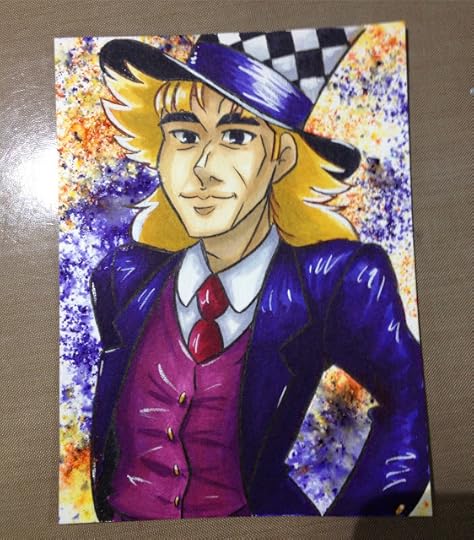
Tutorials:
Inking for Markers:
Tips for Inking Sailor Mitsuo Aida Tutorial
Inking a Cartoon Girl Timelapse
Brushpen Inking Demonstration
Markers:
Skintones and Skies in Alcohol Marker
Diving In to Copic Wides and Alcohol Misters
Making Alcohol Misters
Copic and Watercolor Mixed Media Tutorial
Mixing Copics and Watercolor
Using Marker with Watercolor
Skin Basics, Freckles, Hair Clothes
Creating a Color Wash with Copic Markers
ArtSnacks and SketchBox Challenge (Masking Frisket demonstration)
UCreate SketchBook Review (several techniques demonstrated in detail)
Working With Markers (guest post)
e.k Tools Journaling and Calligraphy Pens (color lineart for alcohol based markers)
Creating Plaid Patterns
Toning Sketches with Copics

Inspiration
Mexpy and Copic Marker Timelapse
And there are dozens more tutorials, overviews, field tests, and tutorials still in my editing queue, so there should be lots more markery goodness in the months to come! If there's something specific you'd like to see me cover in a future video, why not send me an email using the handy dandy email widget on the left hand side and let me know what you'd like to see! I'd love to hear from you.
If you enjoyed these tutorials, and haven't subscribed to my channel yet, what's stopping you? We'd love to have you over on the channel, and there's a lot of great marker stuff coming up in the next couple months! I'm trying really hard to hit that 2.5k goal, so I can give away those comic supplies, so if you enjoyed these tutorials, why not take a moment and share this post, or my channel with your friends using the handy social network buttons below?
My YouTube Channel (full of all sorts of goodies, from unboxings to reviews, to tutorials): www.youtube.com/Nattosoup
Enjoy content like this? Want to help me make more? Take a moment to check out my Patreon, and see what sort of goodies backers get!
Please consider donating to this blog or purchasing from Natto-shop (http://nattosoup.com/shop) if you want me to continue publishing quality content. All materials tested were purchased from my own pocket. Keep on Truckin' Nattosoup is not under any sponsorship.
 Introductory Information
Introductory InformationMechacon Panel Presentation- Introduction to Alcohol Based Markers
Alcohol Based Markers Vs Waterbased Markers
Alcohol Based, Waterbased, Watercolor
Holiday Gift Guide- A Starter Guide to Markers-- Includes recommended colors to begin sets with
Starting a Marker Collection from Scratch
Craft Tools Worth Adding To Your Studio
My Alcohol Based Marker Recommendations

Brand Overviews:
Winsor and Newton Promarkers Vs Letraset Promarkers
Chameleon Marker Overview
3 Cheap Copic Marker Alternatives:
Ali Express Marker Overview
MEXPY Marker Overview
ShinHan Twin Touch, MEXPY, and Copic Overview
Copic Superbrush (Sketch, Ciao) Vs. Copic Optional Nib (Original)

Marker Reviews:
Conda Markers
Shang Hai Touoh (from Ali Express)
Finecolour Sketch
Peter Pauper
Potentate
Artist's Loft
Kurecolor Brush and Fine
Letraset Tria Pantone
Prismacolor (update coming soon!)
Bic Mark It
Shin Han Twin Touch
TriArt Mini
Poison
Blick Markers, Blick Studio Markers, Utrecht Design Markers
Spectrum Noir
Finecolour
Concept and Fab
Marvy LePlume
Chromatix
Chameleon
MEXPY
Pantone Universe Twin
Neopiko
Art Markers (Hobby Lobby)
Letraset Flex
Chartpak AdPro
KureColor S
Winsor and Newton Promarker and Brushmarker
Coming Soon:
Ironlak Strikers
Marvy LePlume Fine
Double line Markers (Ali Express)
Prima
Spectra AD
Spectrum Noir G2 with Brush replacement
Paper Reviews:
Pacon Art1st Marker Pad (includes color recommendations and a tutorial)

Field Tests:
Prismacolor Markers:

Tutorials:
Inking for Markers:
Tips for Inking Sailor Mitsuo Aida Tutorial
Inking a Cartoon Girl Timelapse
Brushpen Inking Demonstration
Markers:
Skintones and Skies in Alcohol Marker
Diving In to Copic Wides and Alcohol Misters
Making Alcohol Misters
Copic and Watercolor Mixed Media Tutorial
Mixing Copics and Watercolor
Using Marker with Watercolor
Skin Basics, Freckles, Hair Clothes
Creating a Color Wash with Copic Markers
ArtSnacks and SketchBox Challenge (Masking Frisket demonstration)
UCreate SketchBook Review (several techniques demonstrated in detail)
Working With Markers (guest post)
e.k Tools Journaling and Calligraphy Pens (color lineart for alcohol based markers)
Creating Plaid Patterns
Toning Sketches with Copics

Inspiration
Mexpy and Copic Marker Timelapse
And there are dozens more tutorials, overviews, field tests, and tutorials still in my editing queue, so there should be lots more markery goodness in the months to come! If there's something specific you'd like to see me cover in a future video, why not send me an email using the handy dandy email widget on the left hand side and let me know what you'd like to see! I'd love to hear from you.
If you enjoyed these tutorials, and haven't subscribed to my channel yet, what's stopping you? We'd love to have you over on the channel, and there's a lot of great marker stuff coming up in the next couple months! I'm trying really hard to hit that 2.5k goal, so I can give away those comic supplies, so if you enjoyed these tutorials, why not take a moment and share this post, or my channel with your friends using the handy social network buttons below?
My YouTube Channel (full of all sorts of goodies, from unboxings to reviews, to tutorials): www.youtube.com/Nattosoup
Enjoy content like this? Want to help me make more? Take a moment to check out my Patreon, and see what sort of goodies backers get!
Please consider donating to this blog or purchasing from Natto-shop (http://nattosoup.com/shop) if you want me to continue publishing quality content. All materials tested were purchased from my own pocket. Keep on Truckin' Nattosoup is not under any sponsorship.

Published on July 10, 2016 13:00
July 6, 2016
Let's Make Some Comics!
Couldn't make my Comic Craft panel at the Nashville Public Library? Fear not, I have a YouTube channel full of art and crafty goodness! To get you started on the right comic making foot, here are a few of my Intro to Comic Craft tutorials, so you can work along at home.
Thumbnails
Roughs
You Need Perspective (perspective for cover)
Setting up a Double Page Spread
Perspective in the Panels
My Intro to Comic Craft series is still in production (lots of painting coming up soon!), so keep an eye out on my channel, for more comicy goodness!
And if you ever have any questions, just shoot me an email using the handy sidebar widget to your left! I'm always looking for suggestions for new tutorials, so let me know how I can help.
And what about when your comic is finished? What do you do with it then? Why, you make a mini comic, of course!
Let's Make a Mini Comic
And just like with my Intro to Comics videos, I have more Let's Make a Mini Comic videos in the pipeline, including design, layout, and printing, so please keep an eye out!
And as always, if you haven't yet subscribed to my YouTube channel, please do so, because there are many topics that are easier to demonstrate through video than through photos.
Please consider donating to this blog or purchasing from Natto-shop (http://nattosoup.com/shop) if you want me to continue publishing quality content. All materials tested were purchased from my own pocket. Keep on Truckin' Nattosoup is not under any sponsorship.
Thumbnails
Roughs
You Need Perspective (perspective for cover)
Setting up a Double Page Spread
Perspective in the Panels
My Intro to Comic Craft series is still in production (lots of painting coming up soon!), so keep an eye out on my channel, for more comicy goodness!
And if you ever have any questions, just shoot me an email using the handy sidebar widget to your left! I'm always looking for suggestions for new tutorials, so let me know how I can help.
And what about when your comic is finished? What do you do with it then? Why, you make a mini comic, of course!
Let's Make a Mini Comic
And just like with my Intro to Comics videos, I have more Let's Make a Mini Comic videos in the pipeline, including design, layout, and printing, so please keep an eye out!
And as always, if you haven't yet subscribed to my YouTube channel, please do so, because there are many topics that are easier to demonstrate through video than through photos.
Please consider donating to this blog or purchasing from Natto-shop (http://nattosoup.com/shop) if you want me to continue publishing quality content. All materials tested were purchased from my own pocket. Keep on Truckin' Nattosoup is not under any sponsorship.

Published on July 06, 2016 13:00



